How to Tell if Your Home Is in a Good Neighborhood
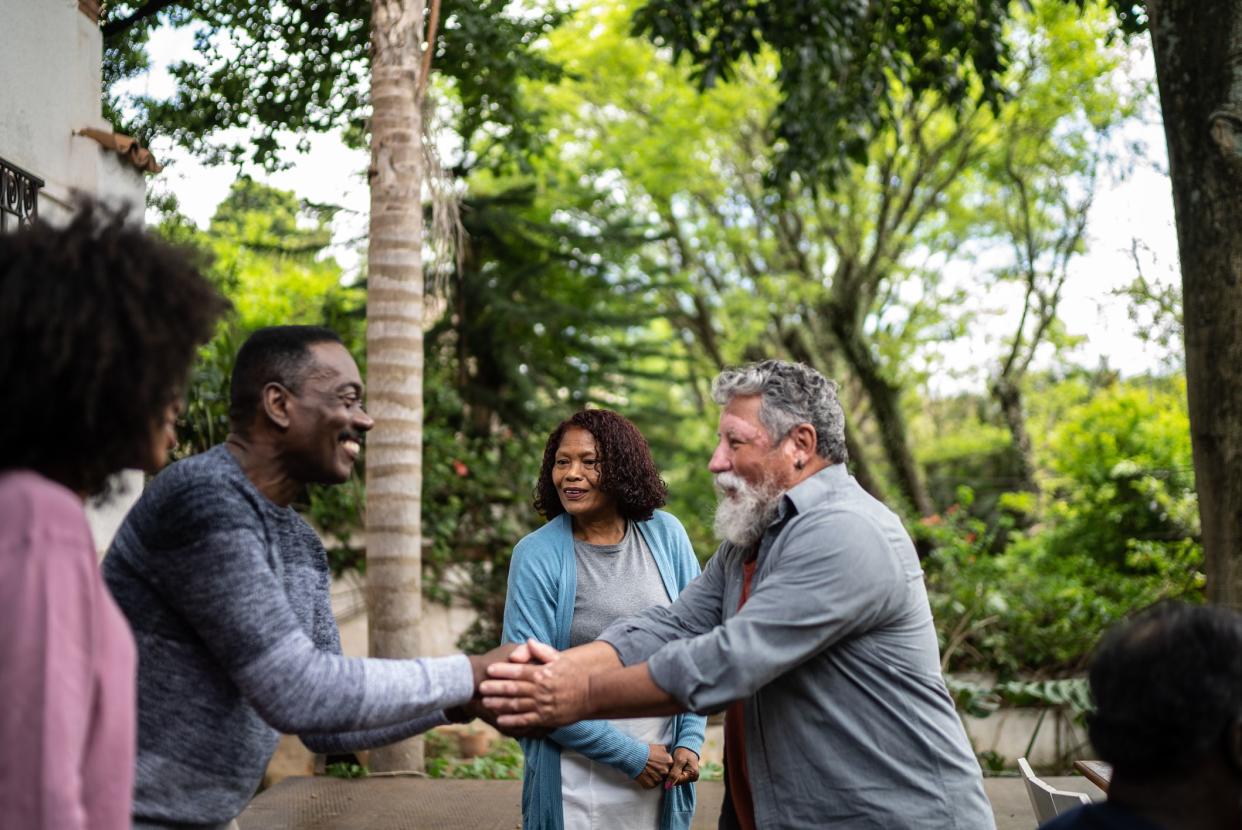
In today’s hypercompetitive housing market, buyers don’t have a lot of leverage. Many prospective buyers, facing rising interest rates and tightened loan requirements, have gotten creative — looking at distressed properties to find a deal, or working with a low-commission real estate agent so they can put a few more dollars into their down payment.
But in your rush to find a home that you can afford, it’s important to look at the neighborhood, too. A home’s neighborhood is arguably as important as the property itself regarding your future satisfaction. And the stakes are high! One recent study found that 70% of recent home buyers had regrets about their purchases.
So how do you evaluate a neighborhood? Several factors will determine how “at home” you feel in your new home. Let’s look at 22 of the most important ones!
1. An Acceptable Noise Level
The amount of ambient noise can have a huge influence on your quality of life in a new home. Make sure you visit a prospective area at different times, and on different days. If you only go to an open house on a Sunday morning, just be aware that you might have visited during the quietest period of the entire week. There could be a beer garden, commuter train, or music venue down the street that changes the entire character of the neighborhood for the rest of the week.
Just like you wouldn’t sell a house without doing a comparative market analysis, you should never buy a house without checking it out multiple times and days.
2. Shopping Options
It’s not ideal to have to get in your car and drive twenty minutes every time you want a coffee or a gallon of milk. Think about the things that you buy every day, or very often, and check to see if there are nearby places where you can get them. Think grocery stores, pharmacies, department stores, and the like. Are they within a walkable distance? What are their hours? Do you have a wide selection, or will you be forced to go to the same place every time?
3. Sidewalks
Sidewalks might sound like something you can take for granted, but there are a lot of neighborhoods that don’t have any sidewalks, often by design. Neighborhoods without sidewalks often have very low community cohesion and trust and tend to be unsafe for people who do attempt to walk around.
High walkability is also associated with higher home values, and you can’t have walkability without sidewalks. Accessibility is also important if you or your loved ones ever need to get around by wheelchair. Bottom line: good neighborhoods have sidewalks.
4. Emergency Services Close By
Where is the nearest emergency room or fire department? While everyone hopes they won’t need those services, being able to call on them when you need to can literally be life-saving. Especially if you’re older or have a medical condition, it’s important to be able to get to a quality hospital in minutes.
The same applies to the fire department. If you have to wait thirty minutes (or more) for the fire department to get to your house, you don’t have much fire protection.
5. A Short Commute
Shorter commutes are associated with more job satisfaction and a higher quality of life. So when you’re looking at a neighborhood, honestly assess how long it’s going to take you to get to and from work. If you aren’t sure you want to drive, look at mass transit options like light rail or buses. The average commute in the U.S. is around a half hour so be wary about exceeding that too much.
6. Trees
Trees are nice to look at, but they’re also associated with higher levels of life satisfaction. One study found that people who lived in neighborhoods with more trees were less likely to be on antidepressants than people who lived in treeless neighborhoods. While there are a lot of factors at work here, it’s a general rule that the more trees there are in a neighborhood, the better it is.
7. A Compatible Vibe
Are you compatible with the culture of the neighborhood? If you’re a young family with kids, you’ll likely want to live in a lively neighborhood with lots of other parents and young children. On the other hand, if you’re a retiree, you may find a neighborhood with a lot of kids to be a little too loud and hectic. If you’re a young single professional, you probably want to live around other young professionals, not in a retiree-heavy neighborhood.
If you’re working with a seasoned agent from a company like Clever Real Estate, they can advise you on where you might fit in. As much as any other single factor, cultural compatibility will determine how happy you are in your new neighborhood.
8. Exercise and Fitness Options
Parks, fitness centers, and sports amenities like basketball courts and soccer fields don’t just provide open green space and places for community gathering — studies have shown that their proximity can make it more likely that you get in your workouts. The upshot is that the closer you live to somewhere you can exercise, the healthier you’ll be.
9. Safety
Study local crime rates, and compare them to similar neighborhoods across the city. Don’t rely too heavily on crime rates, though, as these kinds of statistics are often manipulated or skewed by underreporting (or even overreporting). The best way to determine the level of crime in a neighborhood is to talk to the people who live there. Ask neighbors or people walking around if they’ve experienced any problems with crime in the neighborhood, and if so, what the police response has been.
10. Does It Feel Safe?
This is a slightly different question than if the neighborhood is safe. While crime rates tell an objective (though often incomplete) story about how much crime is present in a neighborhood, the on-the-ground feel of the neighborhood can also have a big impact on how safe you feel. Is the neighborhood well-lit? Are there abandoned homes or vehicles around? Is there a neighborhood watch association where neighbors look out for each other? Do you feel welcomed?
11. Good Schools
If you have kids, it’s a no-brainer that you’ll be looking closely at the local schools. Check out test scores, sports programs, other extracurricular activities, the local curriculum, and school programming, as well as if there’s an active PTA or PTO. As with crime, the best way to assess the local schools is to visit them in person and talk to the parents of children who attend the school. Most schools have a Facebook group for parents that you’ll probably be able to join.
Even if you don’t have kids, you should still take a look at the schools in the neighborhood. High-quality schools are strongly associated with higher home values, so living near a good school means better appreciation and an easier resale in the future.
12. Dining Options
You probably won’t want to cook every single night, so having a few affordable, appealing dining options close to your home is a big plus. Bonus points if they’re within walking distance!
13. The Local Property Tax Rate
Property taxes can be a significant annual expense, especially if you’re moving to an area with elevated property values. You’ll want to calculate your future property tax bill just like you probably calculated your real estate commission. Also, look at recent property tax trends — have they been steeply increasing, or are they fairly stable?
14. The Homeowner’s Association Rules and Fees
If you move into an area governed by a homeowner’s association, you’ll be subject to fairly strict rules about your home and its appearance. If you want a lot of freedom to alter your home’s features and look, you may not be happy living under the authority of an HOA.
You’ll also be responsible for paying HOA fees, which can be significant. These aren’t optional, and in some places, the HOA can even foreclose on you for unpaid fees!
15. Miscellaneous Amenities
All kinds of little neighborhood features may not fall into a particular category, but that could potentially have a huge impact on your quality of life. Amenities like public libraries, music lessons for children, swimming pools or bodies of water, dog parks, tennis courts, sports fields, bike and hiking trails, movie theaters, coffee shops, art galleries, nightlife, and social clubs can all be big difference-makers when it comes to picking a place to live.
16. Foreclosures
In this hot market, a lot of buyers are looking at unconventional options like off-market properties and foreclosures. A neighborhood with a lot of foreclosures is likely very affordable, but be wary of assuming that this kind of neighborhood is a sure thing for future appreciation. If a neighborhood is hit with a lot of foreclosures, falling home values can trigger lower property taxes, which then leads to cuts in public services — and that can have a dramatic dampening effect on a neighborhood’s eventual resurgence.
17. “For Rent” Signs
A lot of “For Rent” signs aren’t necessarily a bad sign — renters are often just as conscientious as homeowners. But they are an indication that community cohesion might not be as high in that neighborhood as it would be in an area with most owners. Many renters are only staying in one place temporarily, repairing their credit score or debt-to-income ratio so they can buy a place. As soon as they’re able to leave, they will. It can be hard to build a tight, trusting community when new people are moving in every year!
18. Development Plans
While a neighborhood might be ideal today, there’s no guarantee it’ll stay that way. Check with your local planning office and on local real estate sites to see what kind of projects are in the works for the neighborhood. That sedate, open neighborhood with lots of trees could change quickly if a developer decides to put in a new subdivision next door, or if the city wants to put a new highway through.
Then again, some new projects can boost home values. If a subway or light rail station is going to be built nearby, or a local commercial strip is set to be revamped, buying a property in the neighborhood could be a great investment.
19. Lot Characteristics
Once you’ve found a particular property you like, zoom in and think about the lot it sits on. Is it a larger corner lot? Is it near a major traffic route, or in a cul de sac? If the adjacent lots are currently vacant, they probably won’t always be — what seems like a private lot in open space now could seem cramped when there are new homes on either side. If you’re closing a sale in Florida, is your lot in a flood-prone location? The type of lot your home sits on will have a big effect on your living experience and eventual resale.
20. The Direction of Neighborhood Growth
Neighborhood evolution generally follows a consistent pattern; as one area develops, and prices go up, many residents and businesses decamp to an adjacent neighborhood, where home values are lower, and there’s room for more development. Once that area is built up, and home values rise, they move on to the next area, and so on.
Whether you call this redevelopment or gentrification, it’s smart to understand where you fit into this dynamic. Looking at a price map on a site like Redfin can suggest your neighborhood’s future. If your neighborhood is squarely in the path of the wave, you know that you have a good chance of seeing rapidly appreciating home values — and maybe of being priced out or finding yourself living in a neighborhood that’s a lot different than the one you moved into. On the other hand, if you’re out of the way, you can count on a more stable future — but one that might be less lucrative.
21. Strange Sounds and Smells
While this might sound weird, many communities are known for having weird sounds or odors. For example, much of Cedar Rapids, Iowa, is notorious for smelling weird, thanks to a cereal plant and a sewage treatment facility.
Other neighborhoods may be near airports or industrial areas that produce a lot of loud noises, which can interfere with your sleep, and tank your home values. In some cases, entire towns can be plagued by unexplainable sounds. Make sure you visit a neighborhood at different times and on different days to ensure you don’t sign up for something you didn’t bargain for!
22. Know Your Wants and Must-Haves
Everyone goes into a home search with a wish list of neighborhood trails and amenities. But nearly everyone has to compromise on that wish list, especially in a hot seller’s market, and especially if you’re a first-time home buyer.
To avoid serious buyer’s remorse down the line, sort the items on your wish list into two categories: wants and must-haves. Must-haves are non-negotiable necessities; for example, if you have children, good schools would be a must-have. Anywhere you move would have to have those characteristics.
In the other group, put your wants. This will include items like dining options, certain amenities, new construction, and other features that you can live without.
As you search for a neighborhood and a home, make sure you prioritize your must-haves and stay flexible on your wants.
This article originally appeared on Anytimeestimate.com and was syndicated by MediaFeed.org.
More from MediaFeed:
The Top 50 Safest Cities in America
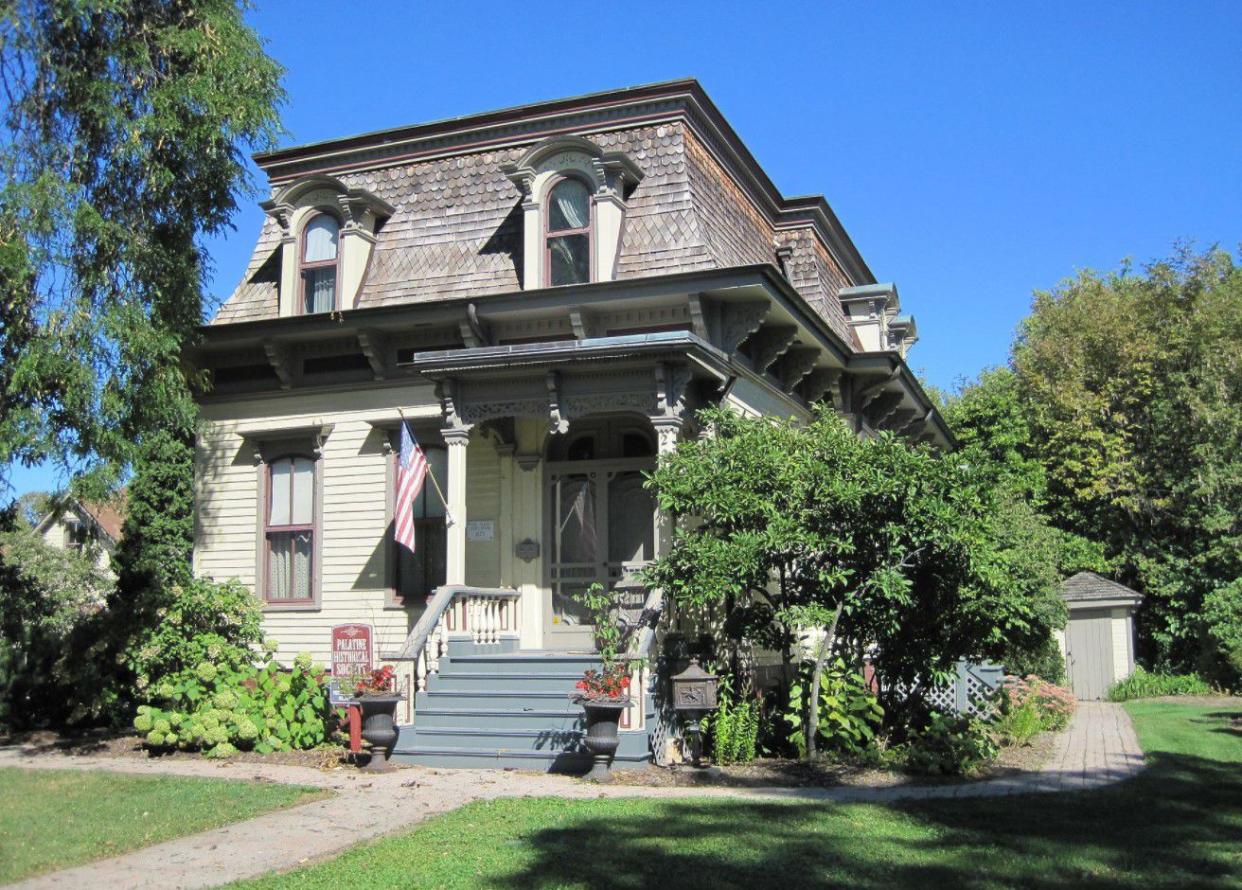
For many homebuyers, safety is a top concern when shopping for a house. It can influence where you feel comfortable living, and safety ratings can have a big effect on local housing market trends.
If you’re in the market to buy or rent a home and you’re looking for just the right spot, check out this list of the 50 safest cities from NeighborhoodScout, which looks at the property and violent crime in cities across the country. The safest cities in America tend to be suburban areas close to major cities like New York and Boston. Only one spot on this list is outside a major metropolitan area.
Massachusetts is home to the most cities on the list at 17, and when you factor in Connecticut towns, New England represents nearly 40% of the safest cities.
Residents of the cities that made the list (pop. 25,000 and over) tend to have a median household income over $100,000, though that isn’t the case in every town.
Here’s a countdown of the 50 safest cities in the U.S. that you could call home.
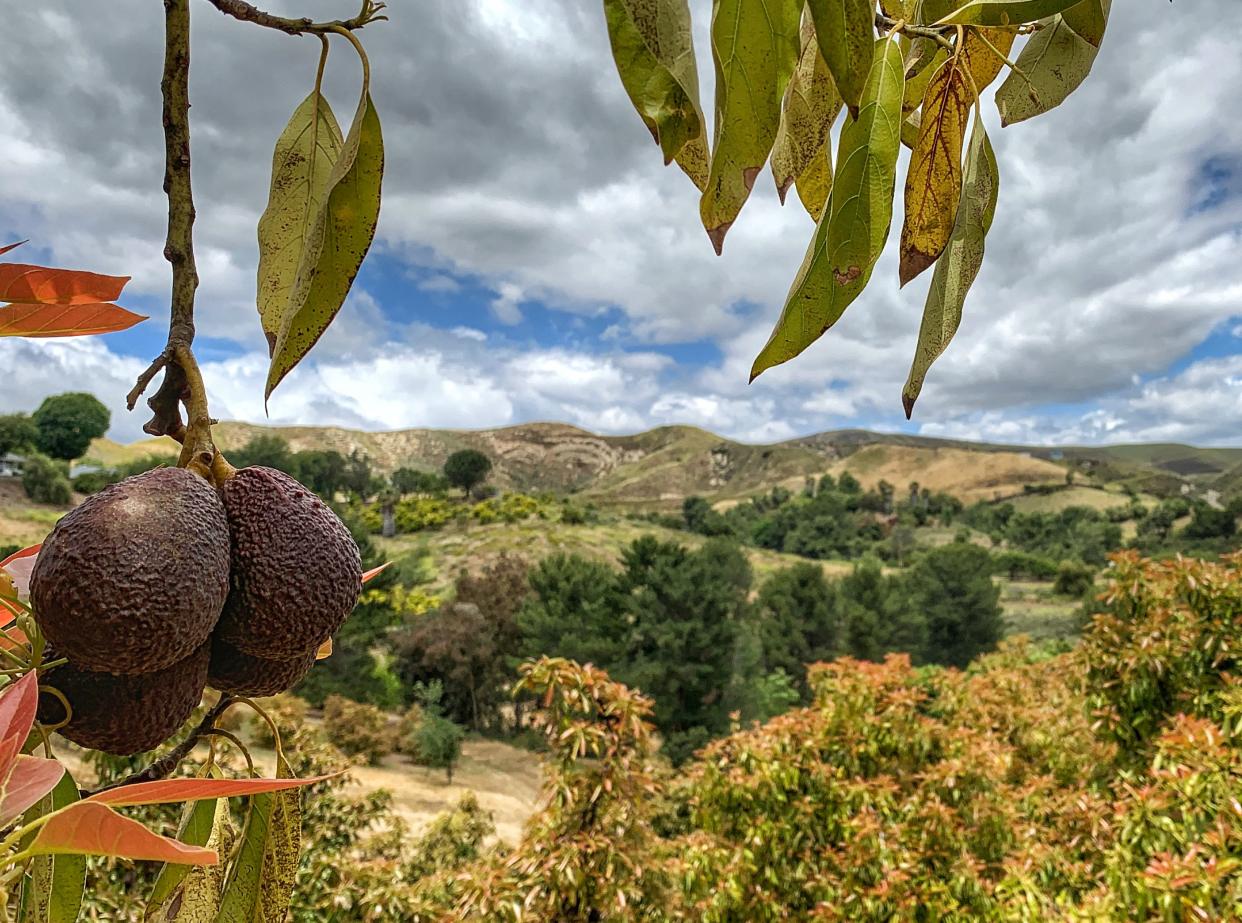
Located in Ventura County in Southern California, Moorpark sits 50 miles northwest of downtown Los Angeles. The city was incorporated in 1983 and was named after the Moorpark apricot that grew throughout the valley. The city is a natural choice for raising a family, with nine schools and the lowest serious crime rate in the county.
- Population: 36,375
- Total Crime Rate (per 1,000 residents): 7.2
- Chance of Being a Victim: 1 in 137
- Major City Nearby: Oxnard
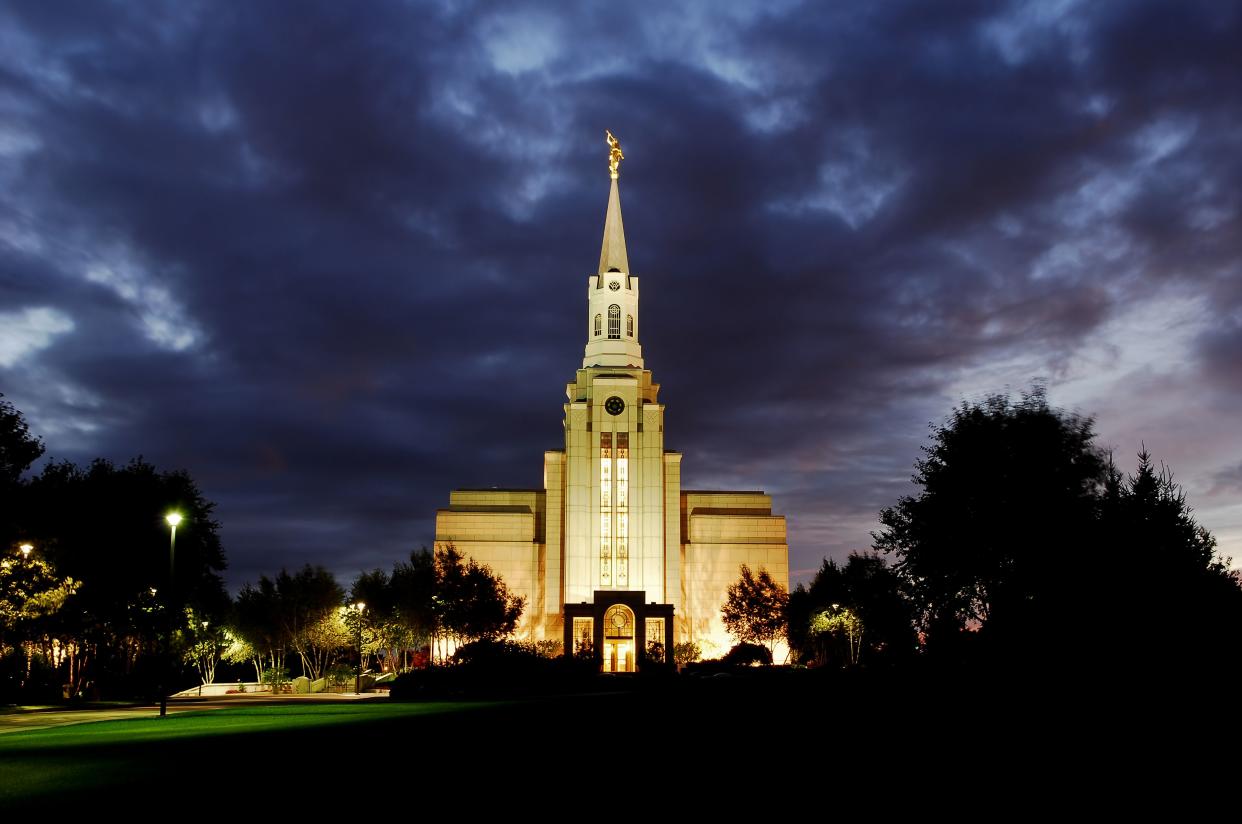
This city in the western suburbs of Boston offers residents highly rated schools and lots of restaurants, coffee shops and parks. Perhaps unsurprisingly, many families choose to call Belmont home.
- Population: 26,116
- Total Crime Rate (per 1,000 residents): 7.2
- Chance of Being a Victim: 1 in 138
- Major City Nearby: Boston
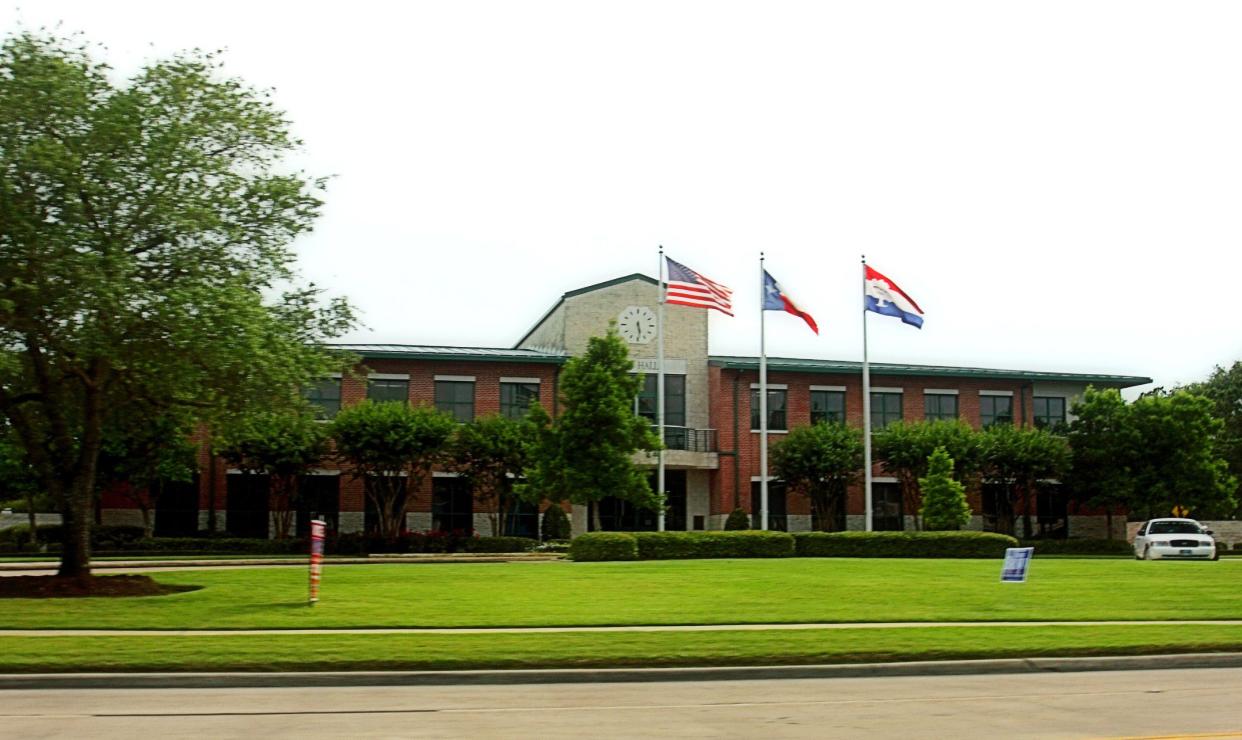
Friendswood began as a Quaker town in 1895 and became known for growing and preserving Magnolia figs. Since the 1950s, it has transformed into a quiet bedroom community 30 minutes from Houston and Galveston.
- Population: 40,290
- Total Crime Rate (per 1,000 residents): 7.2
- Chance of Being a Victim: 1 in 138
- Major City Nearby: Houston
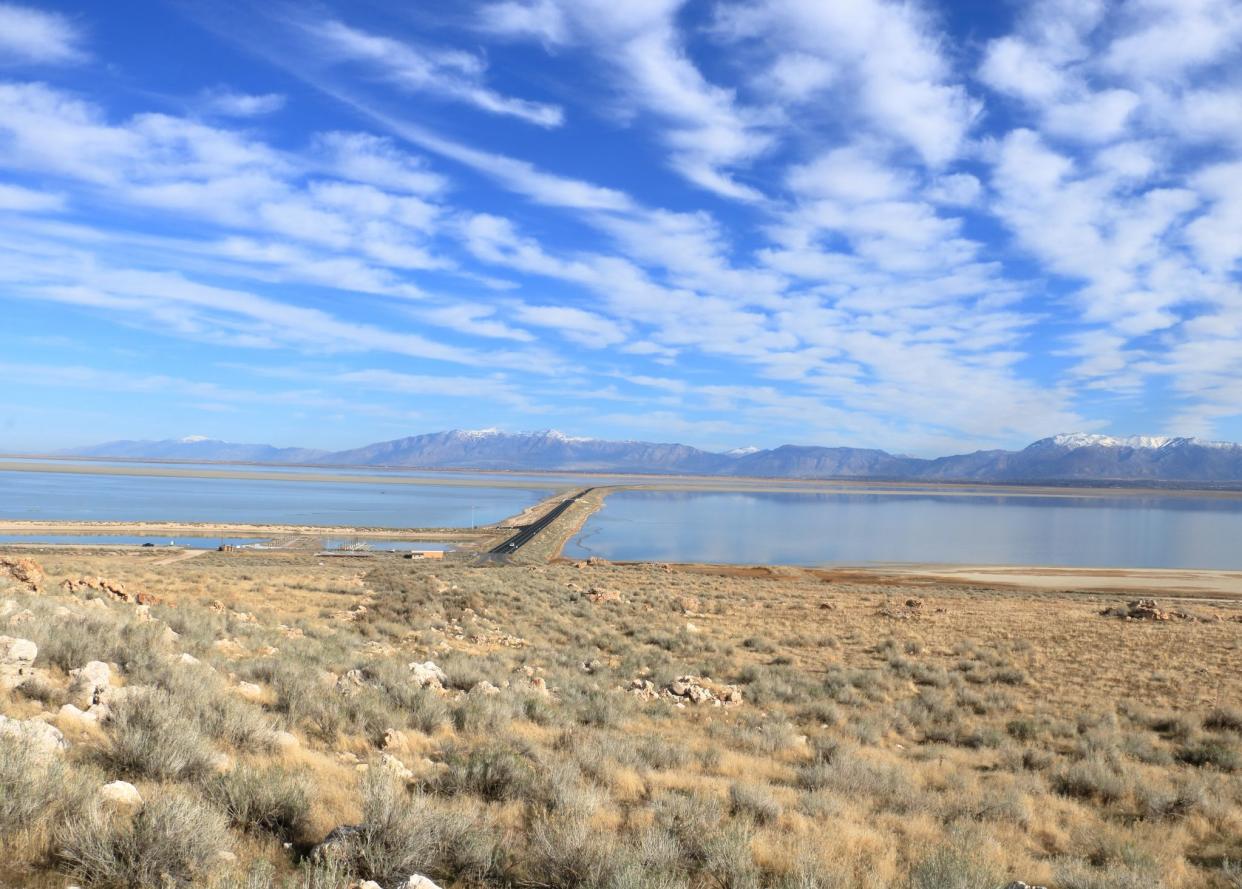
Located on the shores of the Great Salt Lake, this farming community is rapidly transforming into a suburban outpost of Salt Lake City. The city offers easy access to Antelope Island State Park, home to bison, pronghorn antelope and other desert creatures.
- Population: 31,458
- Total Crime Rate (per 1,000 residents): 7.0
- Chance of Being a Victim: 1 in 142
- Major City Nearby: Ogden
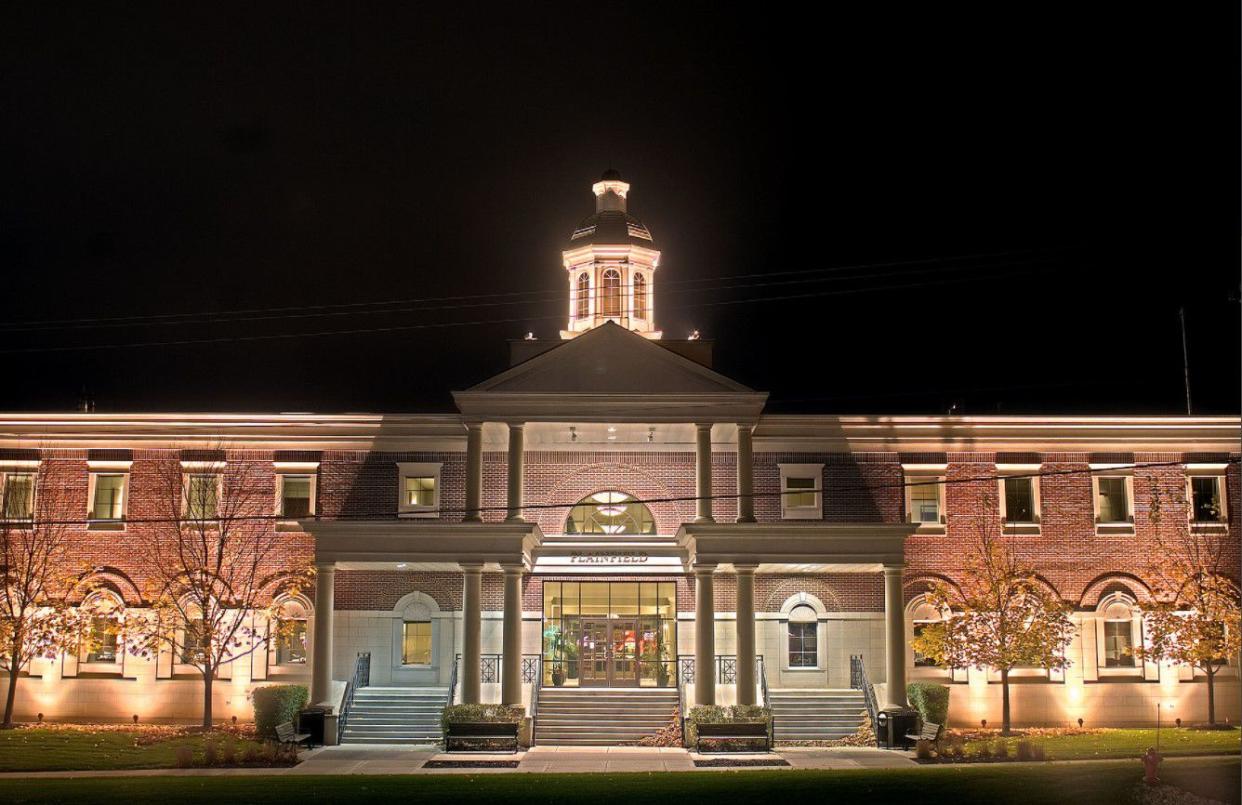
This village on the outskirts of the Chicago metro area has put a lot of effort into making its vibrant downtown pedestrian-friendly to give residents easy access to restaurants, shopping and entertainment.
- Population: 44,308
- Total Crime Rate (per 1,000 residents): 6.9
- Chance of Being a Victim: 1 in 143
- Major City Nearby: Chicago
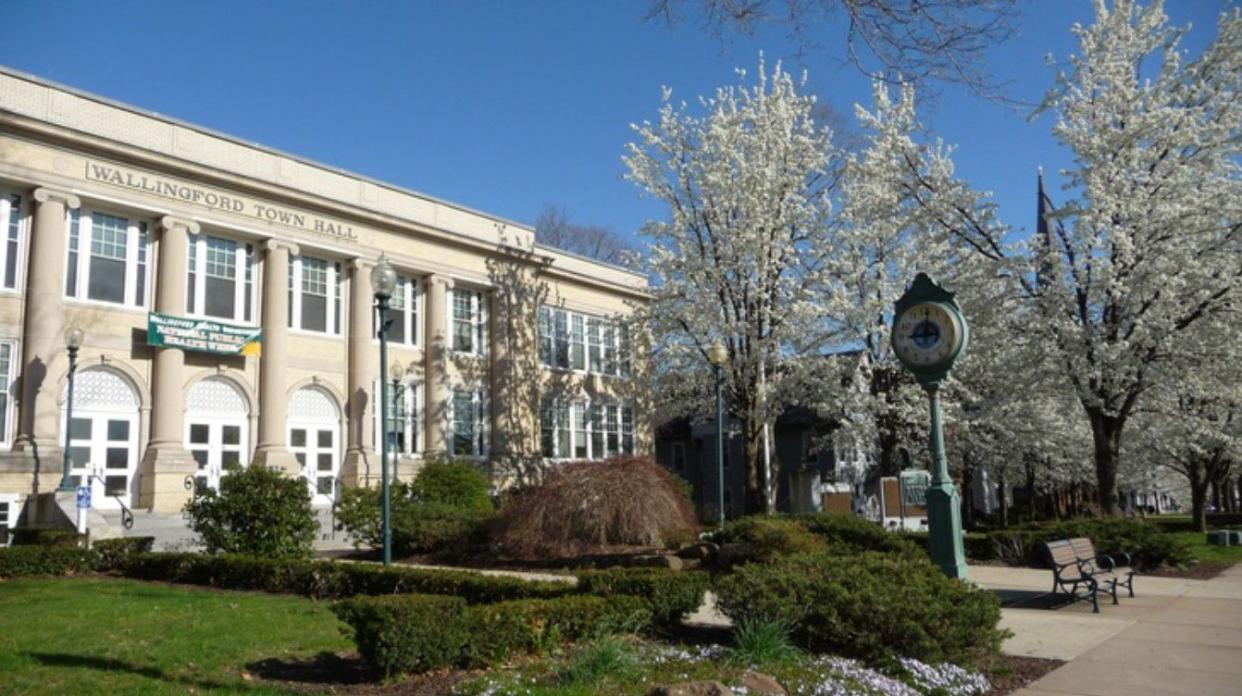
One of three Connecticut towns to make the safest cities list, Wallingford began as a settlement along the Quinnipiac River in 1667. Since then, the city has grown to be home to more than 40,000 residents and has its own symphony orchestra, which performs throughout the year at the Paul Mellon Arts Center.
- Population: 44,326
- Total Crime Rate (per 1,000 residents): 6.9
- Chance of Being a Victim: 1 in 143
- Major City Nearby: New Haven
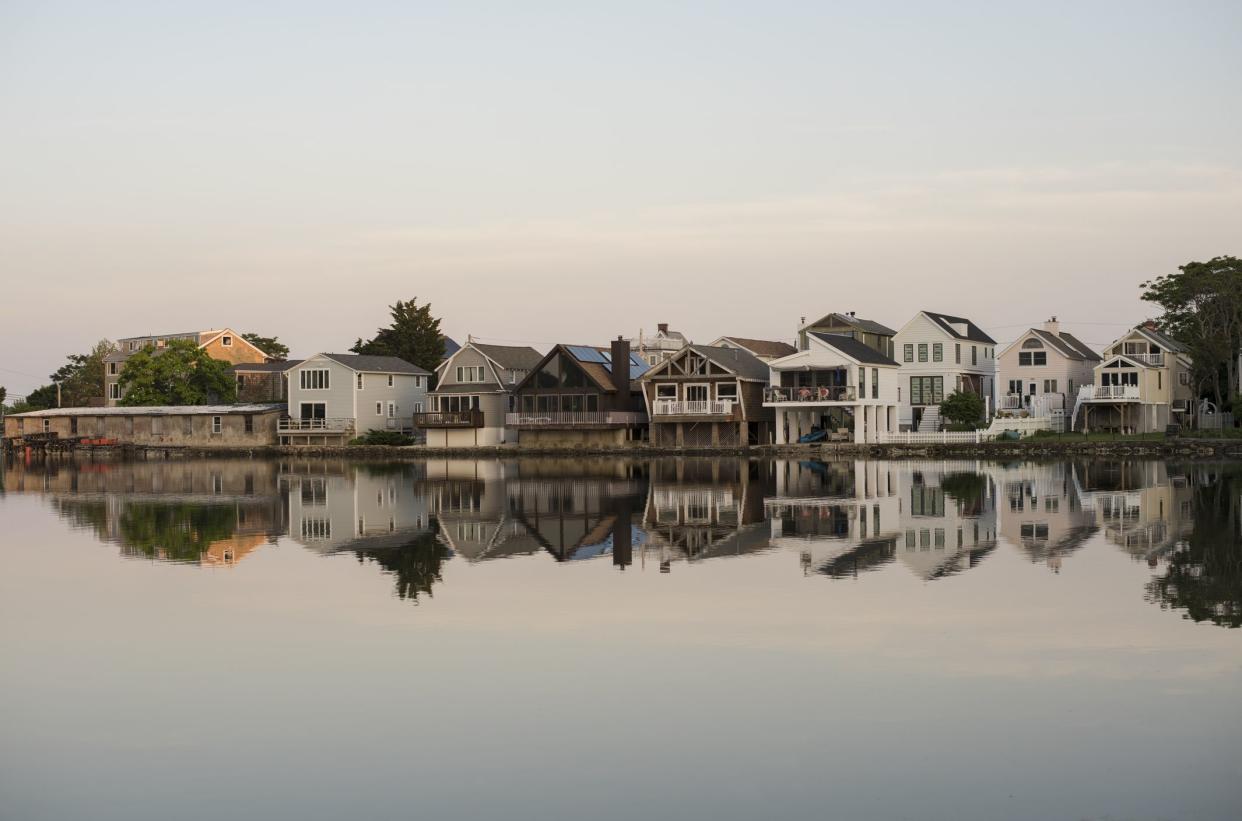
This small city on Long Island Sound offers access to beaches, Sherwood Island State Park and a quaint downtown on the Saugatuck River.
- Population: 28,491
- Total Crime Rate (per 1,000 residents): 6.9
- Chance of Being a Victim: 1 in 144
- Major City Nearby: Bridgeport
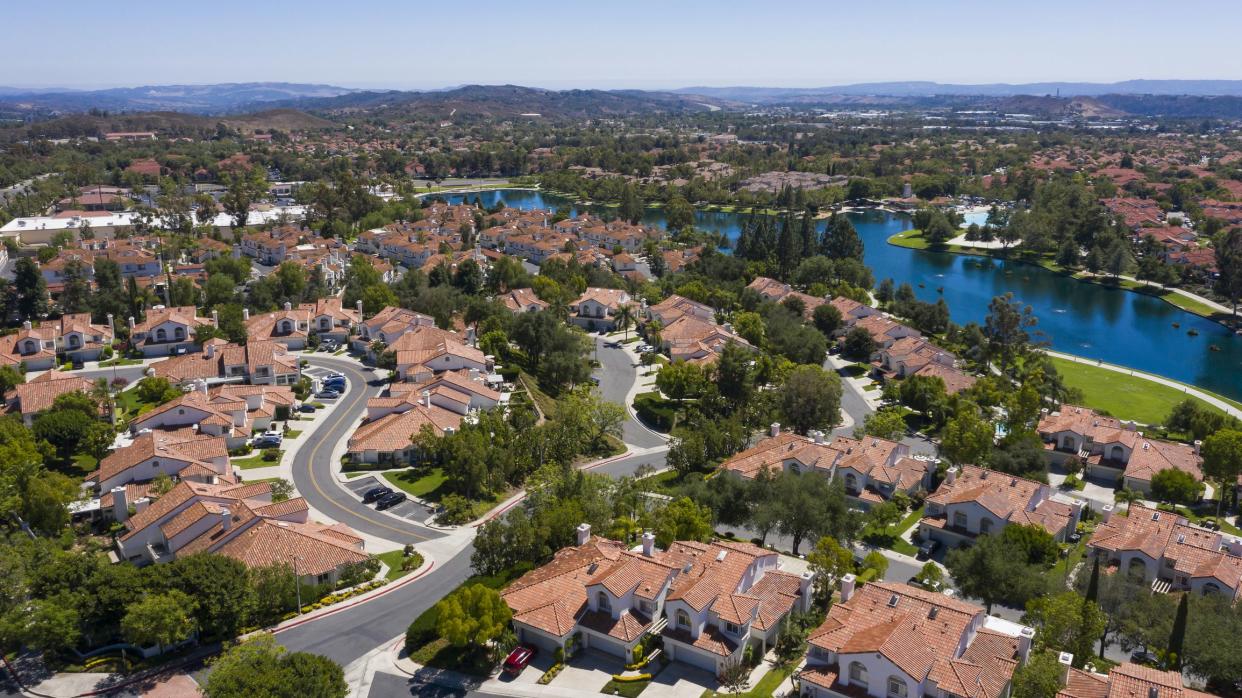
Tucked against the mountains in Orange County, Rancho Santa Margarita offers a respite from the urban sprawl of much of the rest of Southern California. The city is master planned to balance the amenities of a small city with the natural landscape.
- Population: 47,896
- Total Crime Rate (per 1,000 residents): 6.9
- Chance of Being a Victim: 1 in 144
- Major City Nearby: Los Angeles
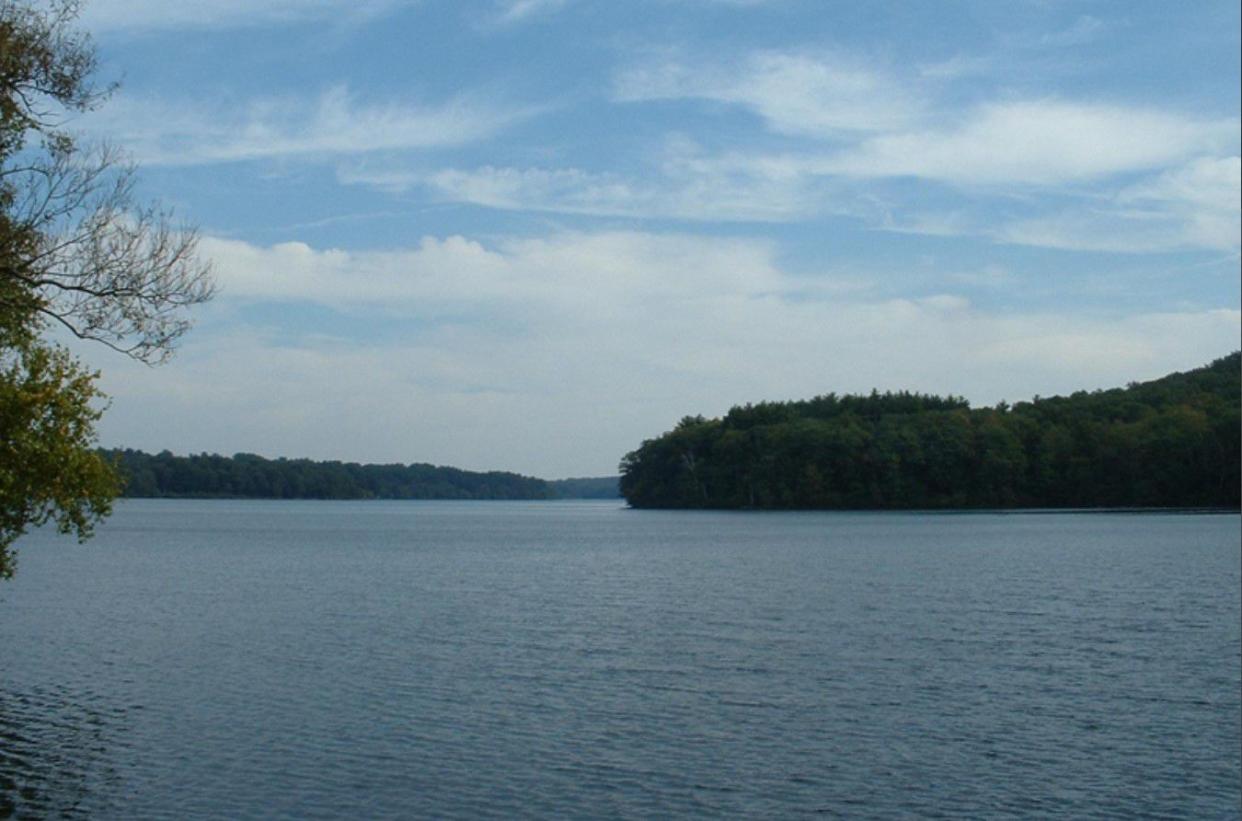
Massachusetts makes a good showing on the safest cities list, representing nearly 30% of the burgs listed.
- Population: 31,188
- Total Crime Rate (per 1,000 residents): 6.8
- Chance of Being a Victim: 1 in 145
- Major City Nearby: Boston
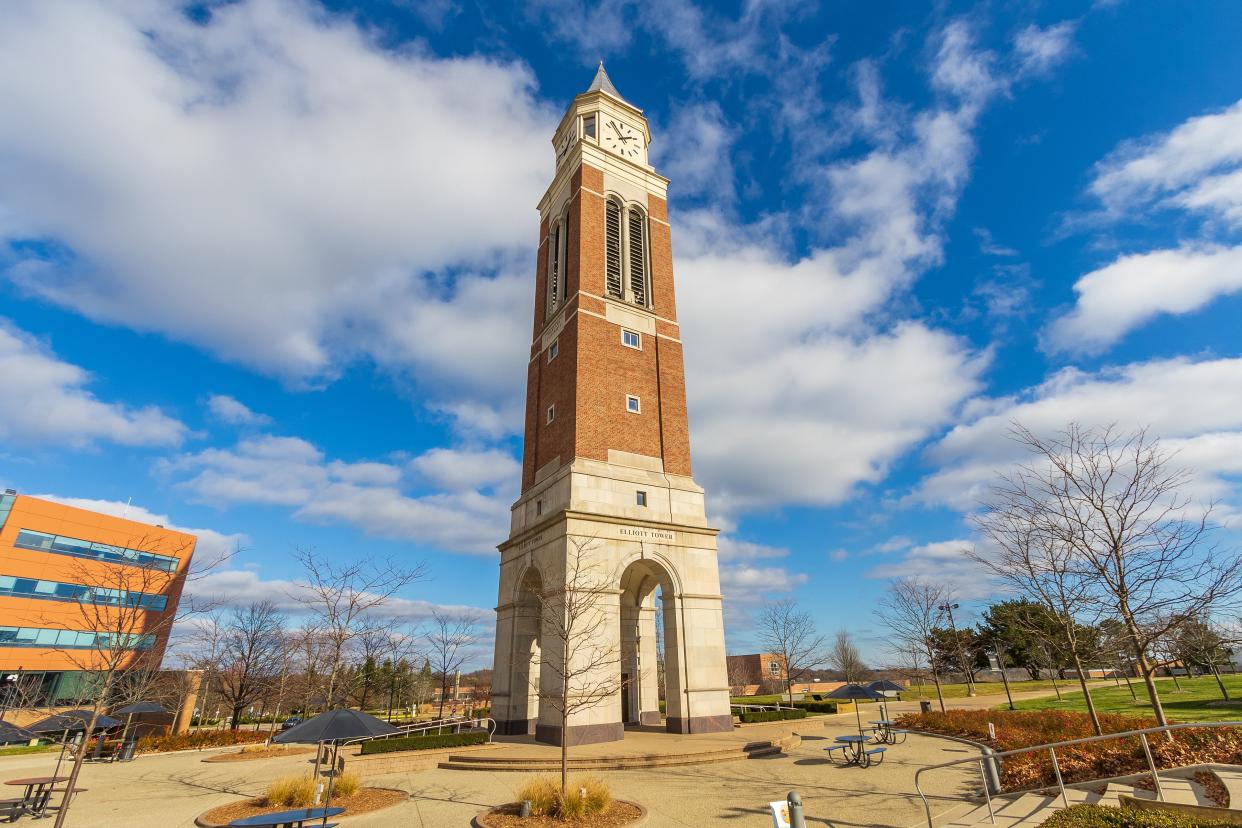
This Detroit suburb features the 102-acre Avon Nature Study Area on the Clinton River and the Rochester Hills Museum, where visitors can learn about pioneer farmers, Native American history and local ecology. The city is considered the safest in Michigan.
- Population: 74,516
- Total Crime Rate (per 1,000 residents): 6.8
- Chance of Being a Victim: 1 in 145
- Major City Nearby: Detroit
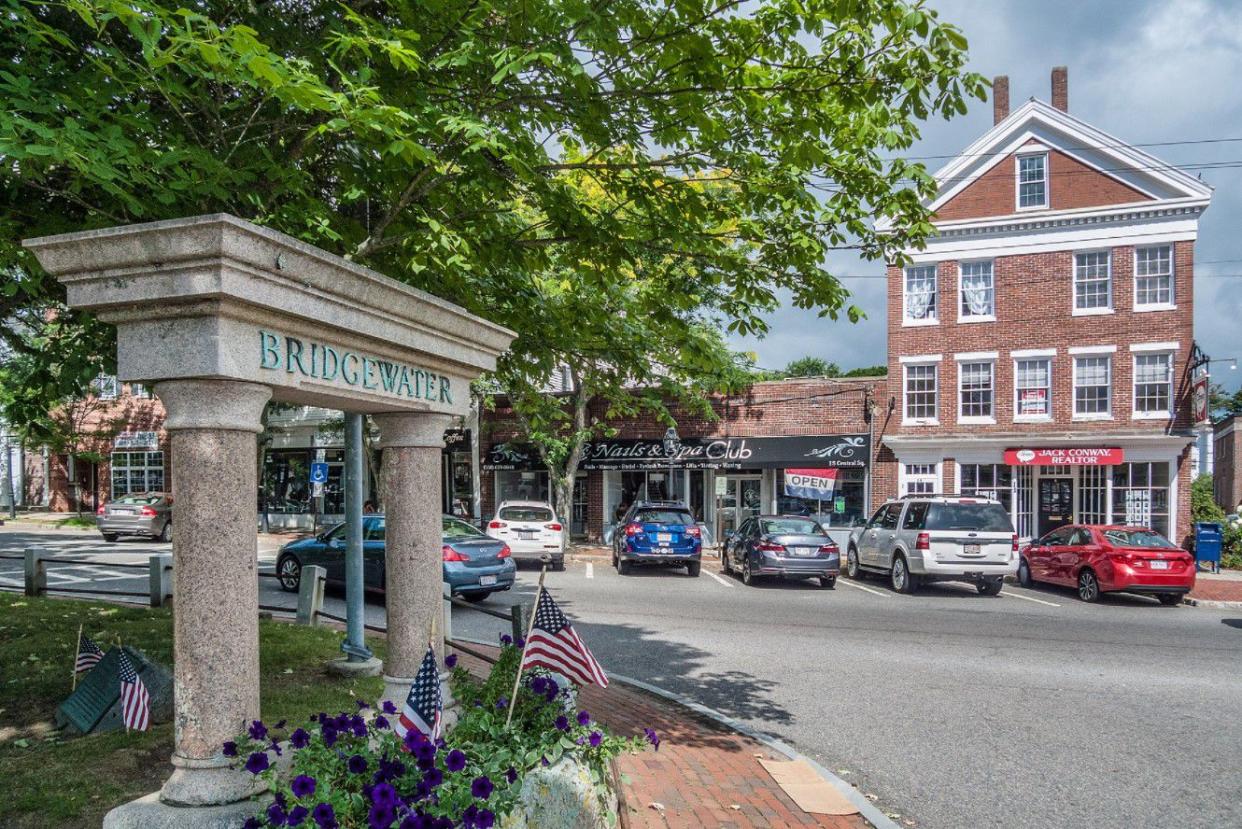
Bridgewater lies south of Boston, northwest of Cape Cod, and east of Providence, Rhode Island.
- Population: 27,619
- Total Crime Rate (per 1,000 residents): 6.7
- Chance of Being a Victim: 1 in 148
- Major City Nearby: Boston
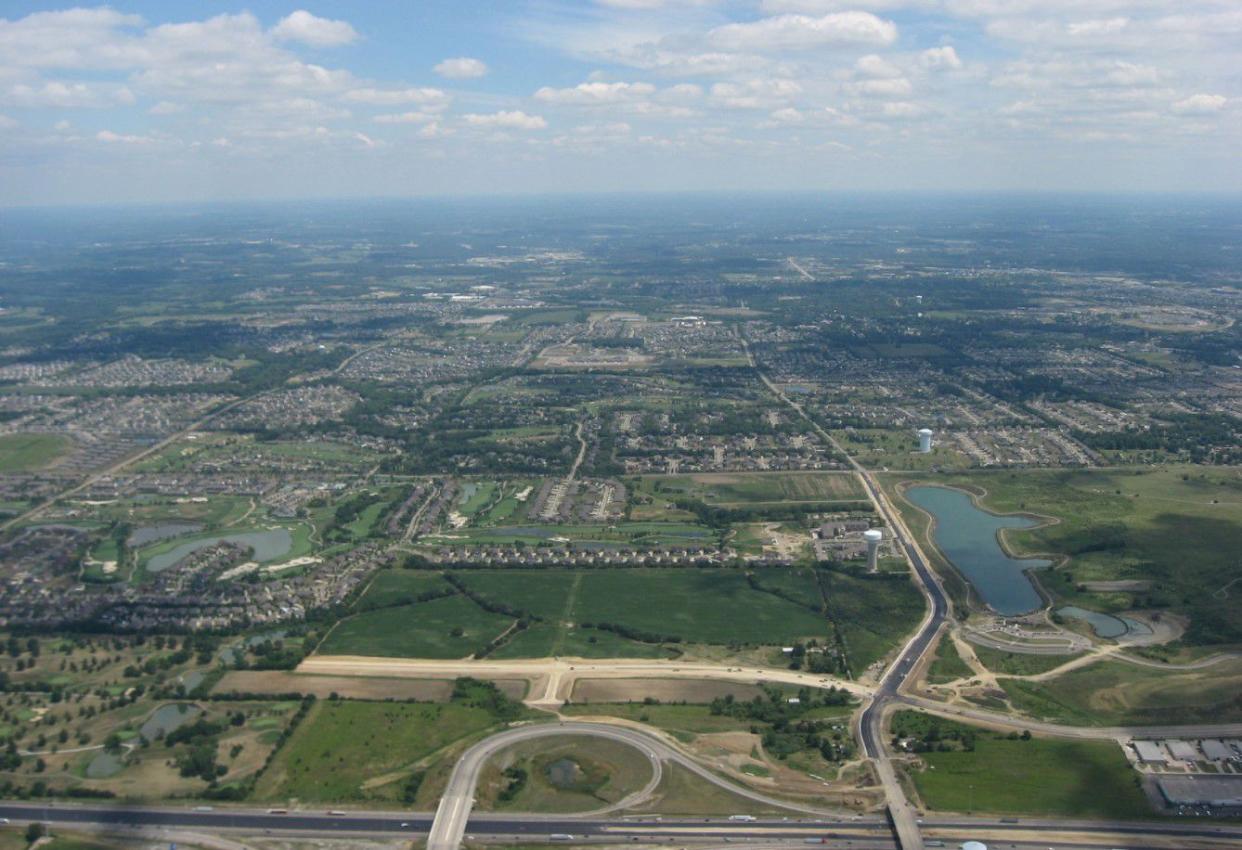
Mason is the largest city in Warren County. The county is known as “Ohio’s Largest Playground” and boasts regional attractions including the Golf Center, the Great Wolf Lodge and Kings Island amusement park.
- Population: 33,870
- Total Crime Rate (per 1,000 residents): 6.7
- Chance of Being a Victim: 1 in 148
- Major City Nearby: Cincinnati
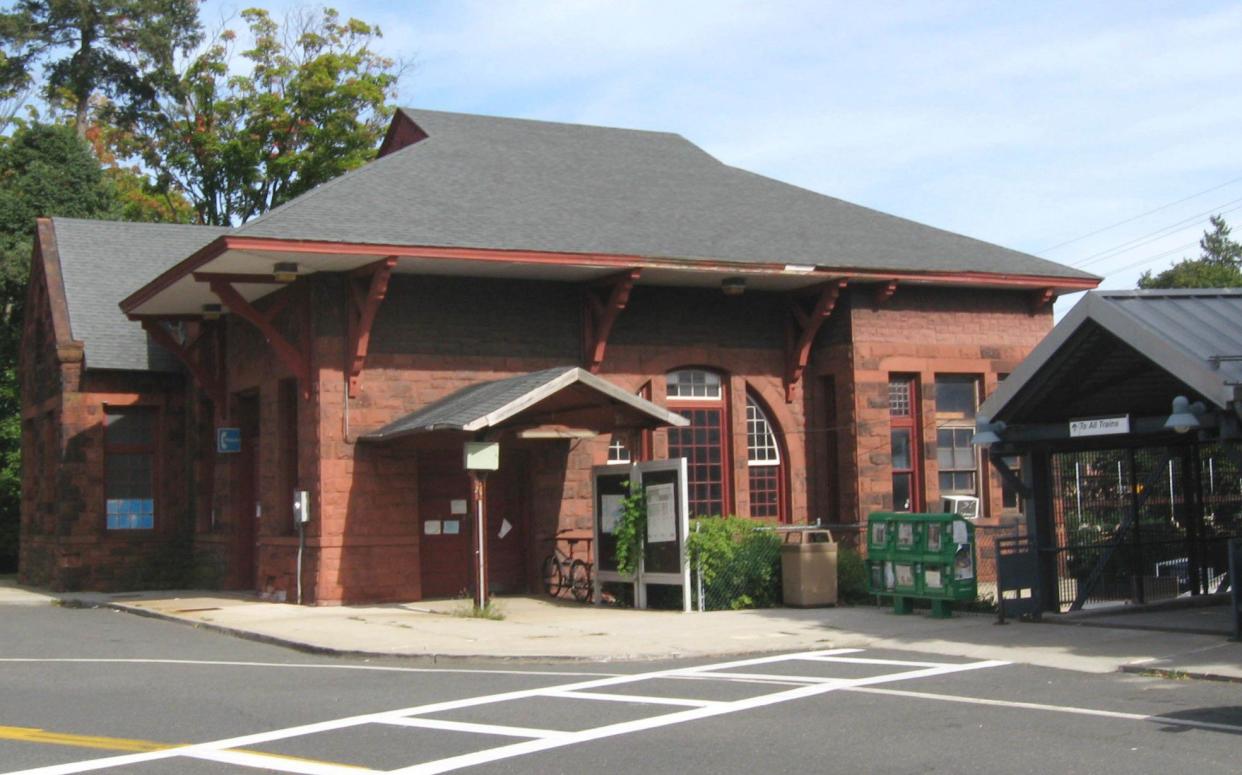
Nestled near the Connecticut border, the Westchester County city of Harrison is just a stone’s throw from New York City. The town is home to one of America’s richest ZIP codes, the neighborhood of Purchase, where the average income reaches beyond $800,000.
- Population: 28,943
- Total Crime Rate (per 1,000 residents): 6.6
- Chance of Being a Victim: 1 in 150
- Major City Nearby: New York
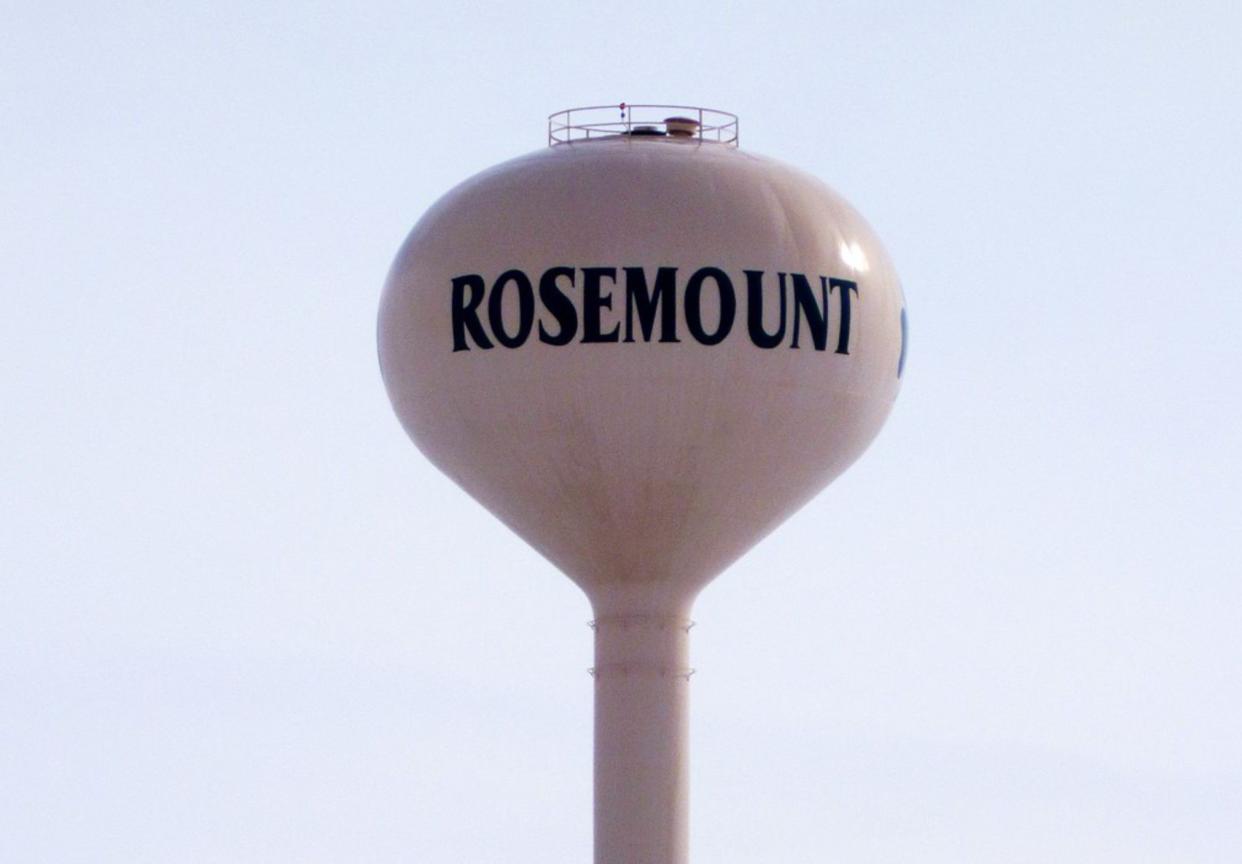
The only Minnesota city to make the list, Rosemount offers residents access to the resources and culture of the Twin Cities while enjoying one of America’s safest towns.
- Population: 25,207
- Total Crime Rate (per 1,000 residents): 6.6
- Chance of Being a Victim: 1 in 150
- Major City Nearby: Minneapolis
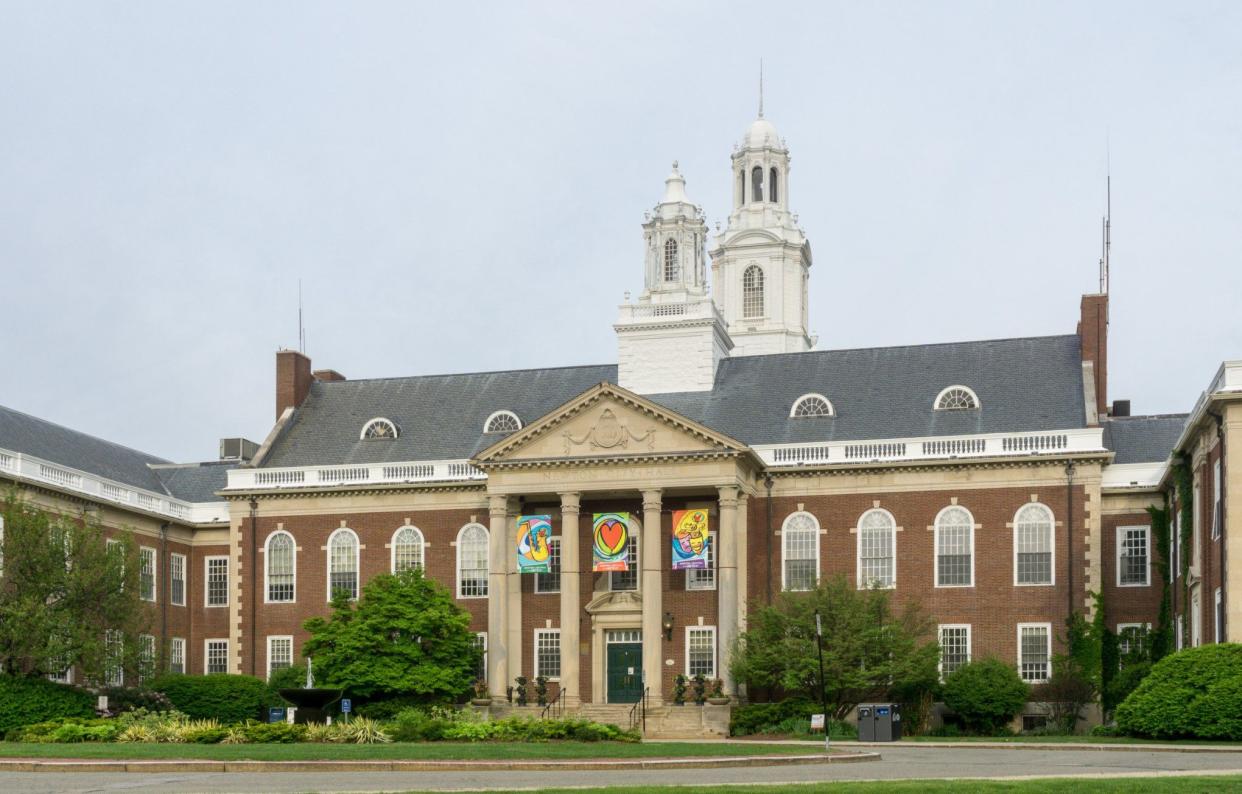
Just over the Boston line, Newton is a wealthy suburb where the median household income in 2019 was over $150,000, and 72% of the population consisted of homeowners.Newton is the largest city by population to make the top 50 list.
- Population: 88,414
- Total Crime Rate (per 1,000 residents): 6.6
- Chance of Being a Victim: 1 in 151
- Major City Nearby: Boston
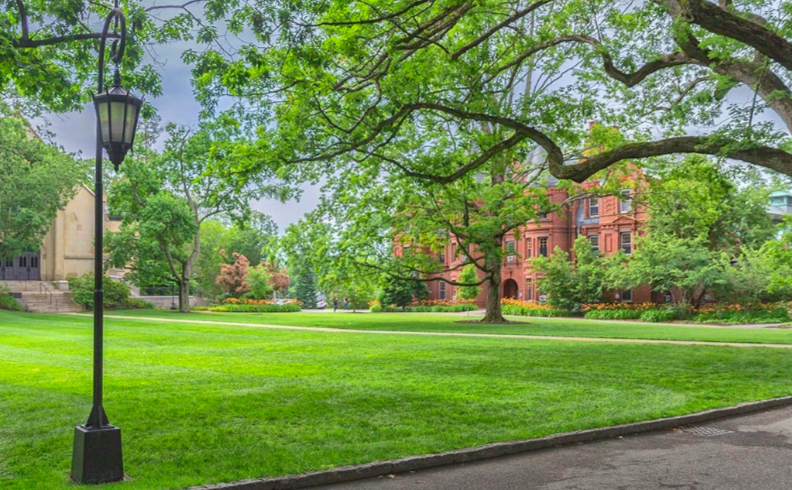
West of Newton, Wellesley is a much smaller municipality, though the median household income is higher, at over $197,000, and the homeownership rate tops 80%.
- Population: 28,670
- Total Crime Rate (per 1,000 residents): 6.5
- Chance of Being a Victim: 1 in 151
- Major City Nearby: Boston
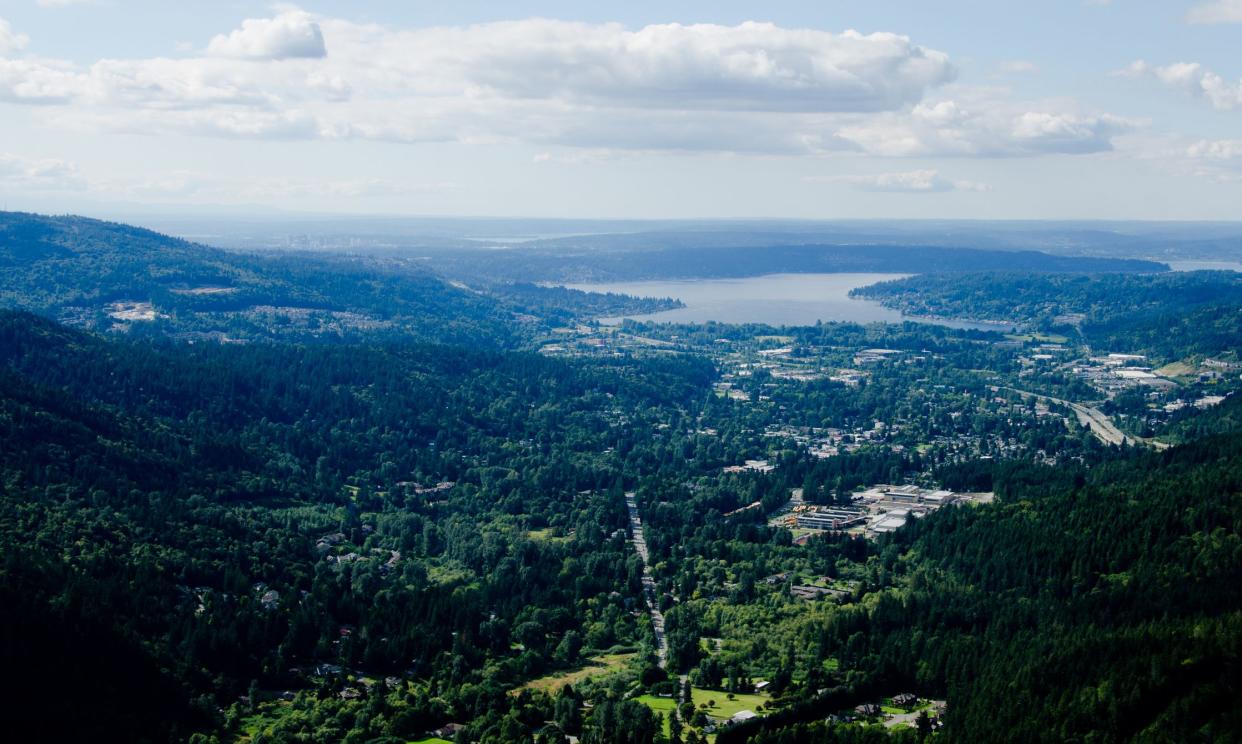
Located on the eastern shores of Lake Sammamish, the town offers a spread-out suburban feel with highly rated public schools and access to restaurants, coffee shops and parks.
- Population: 65,892
- Total Crime Rate (per 1,000 residents): 6.5
- Chance of Being a Victim: 1 in 153
- Major City Nearby: Seattle
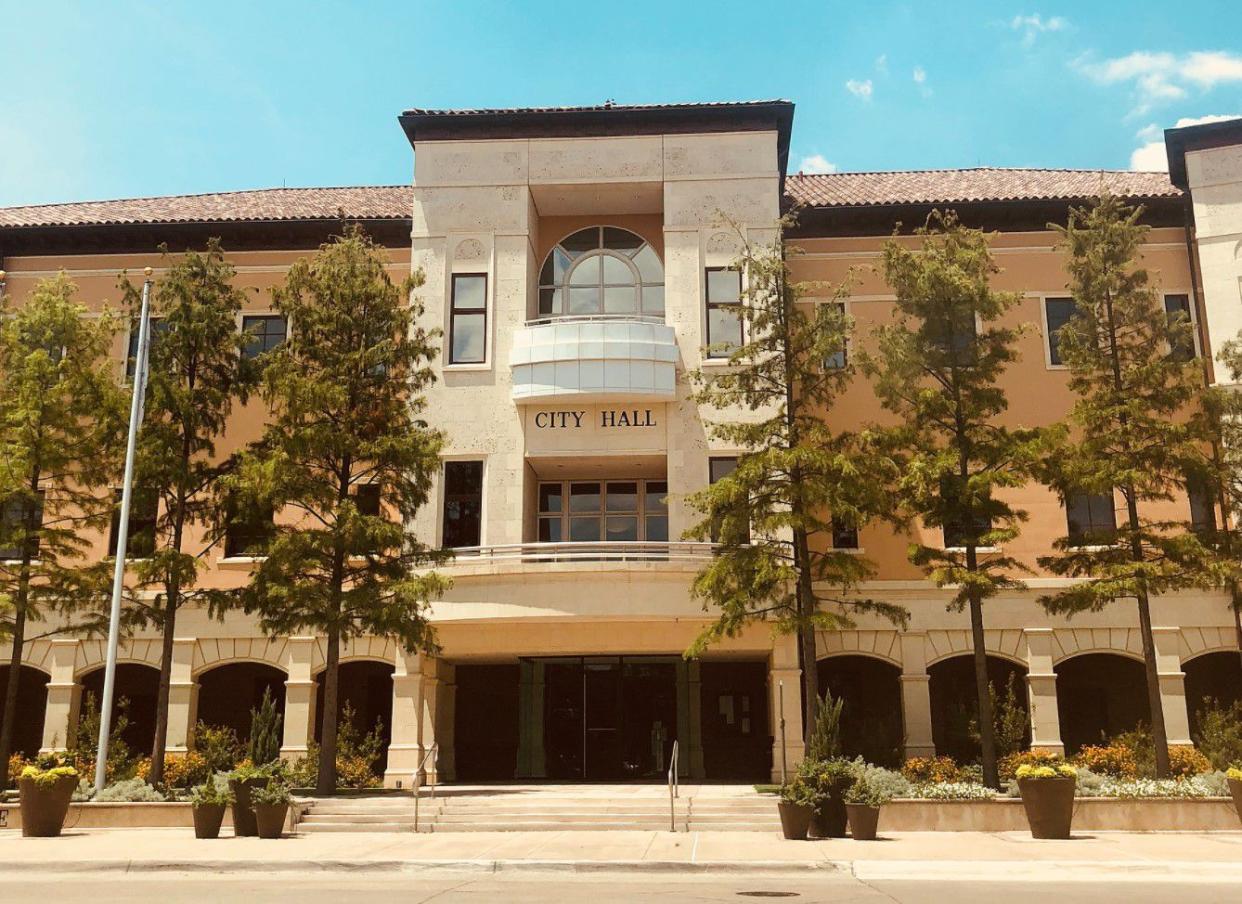
Conveniently sandwiched between the Dallas and Fort Worth areas, Colleyville offers a rural feel close to big-city amenities.
- Population: 27.091
- Total Crime Rate (per 1,000 residents): 6.4
- Chance of Being a Victim: 1 in 154
- Major City Nearby: Dallas
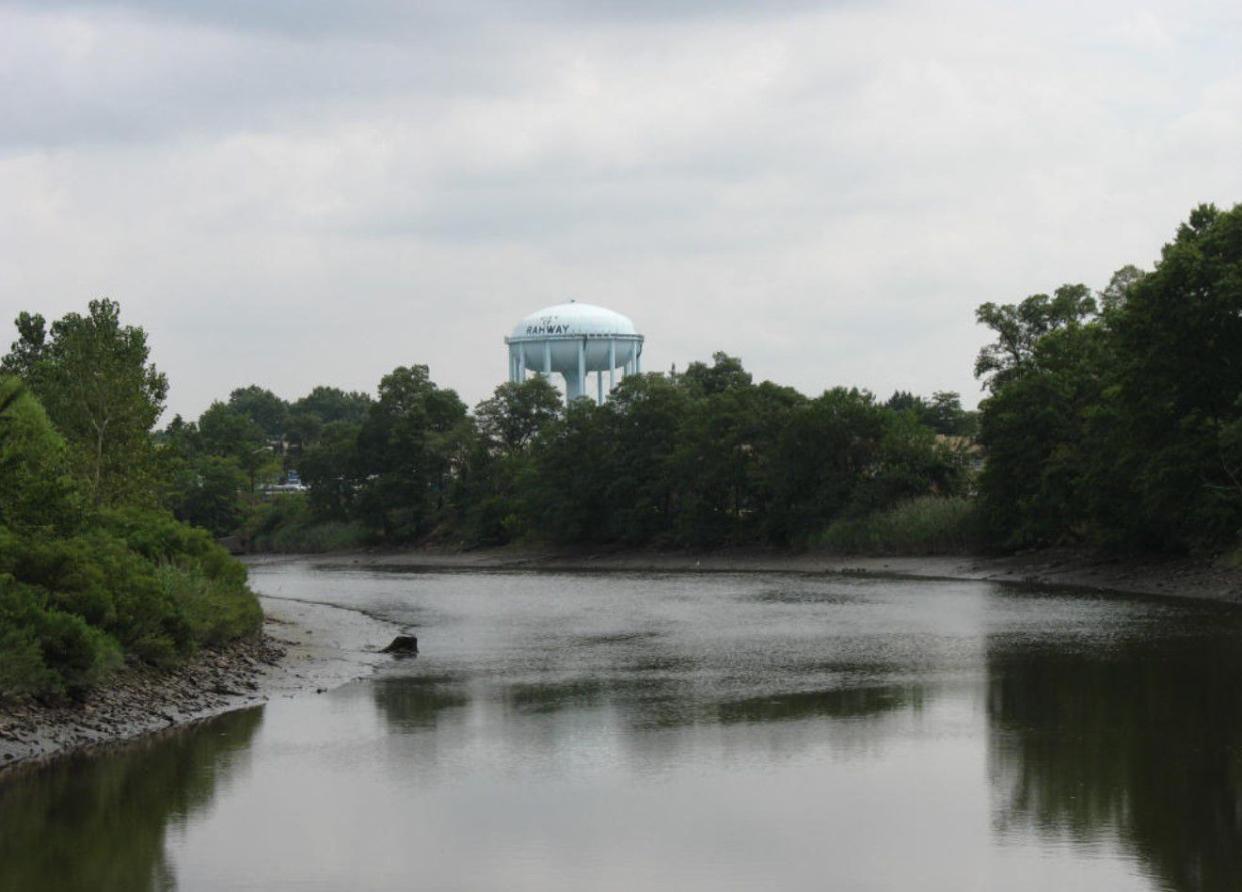
The first of five New Jersey cities to make the top 50 list, Rahway is located just west of Staten Island. Median income is modest, nearing $79,000 per household.
- Population: 29,895
- Total Crime Rate (per 1,000 residents): 6.4
- Chance of Being a Victim: 1 in 154
- Major City Nearby: New York
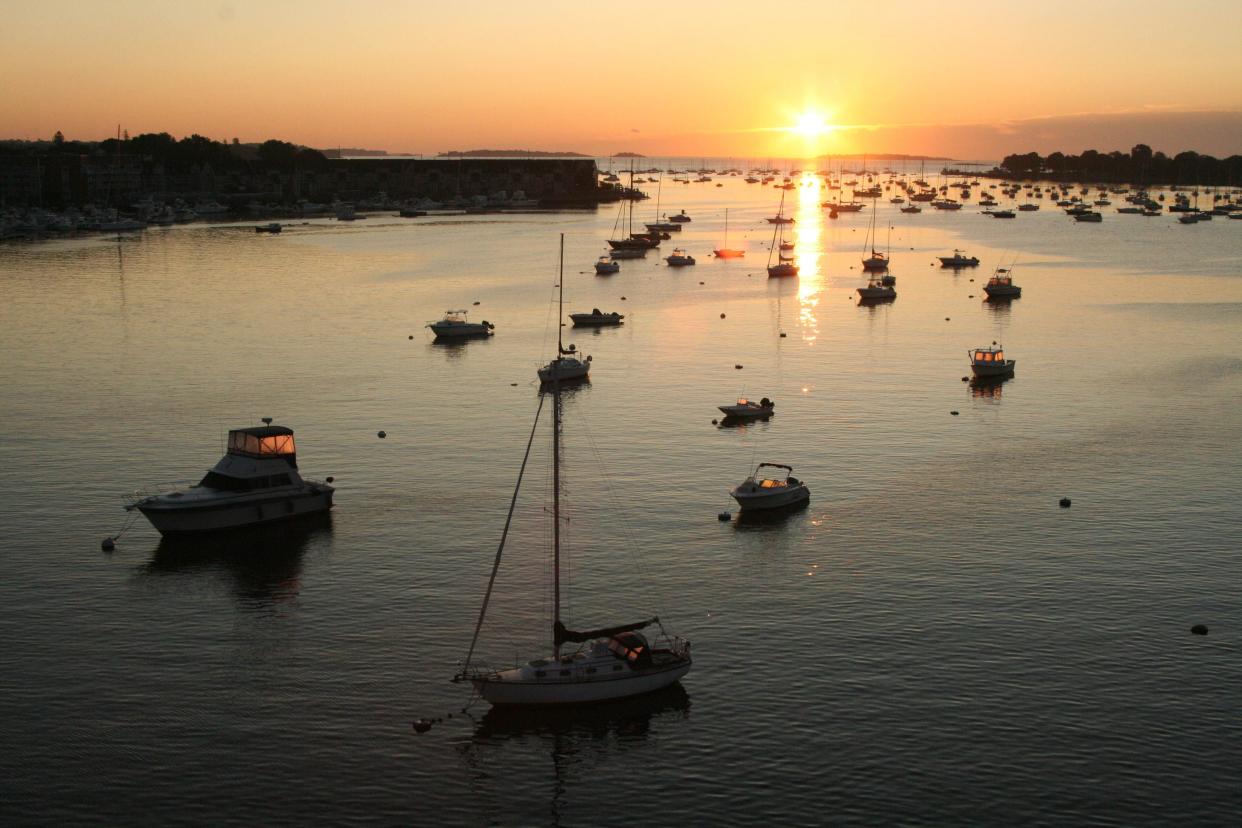
Beverly is a suburb of Boston on the North Shore of Massachusetts, just north of Salem. Like its witchy neighbor, Beverly offers historic New England architecture and water access.
- Population: 42,174
- Total Crime Rate (per 1,000 residents): 6.4
- Chance of Being a Victim: 1 in 155
- Major City Nearby: Boston
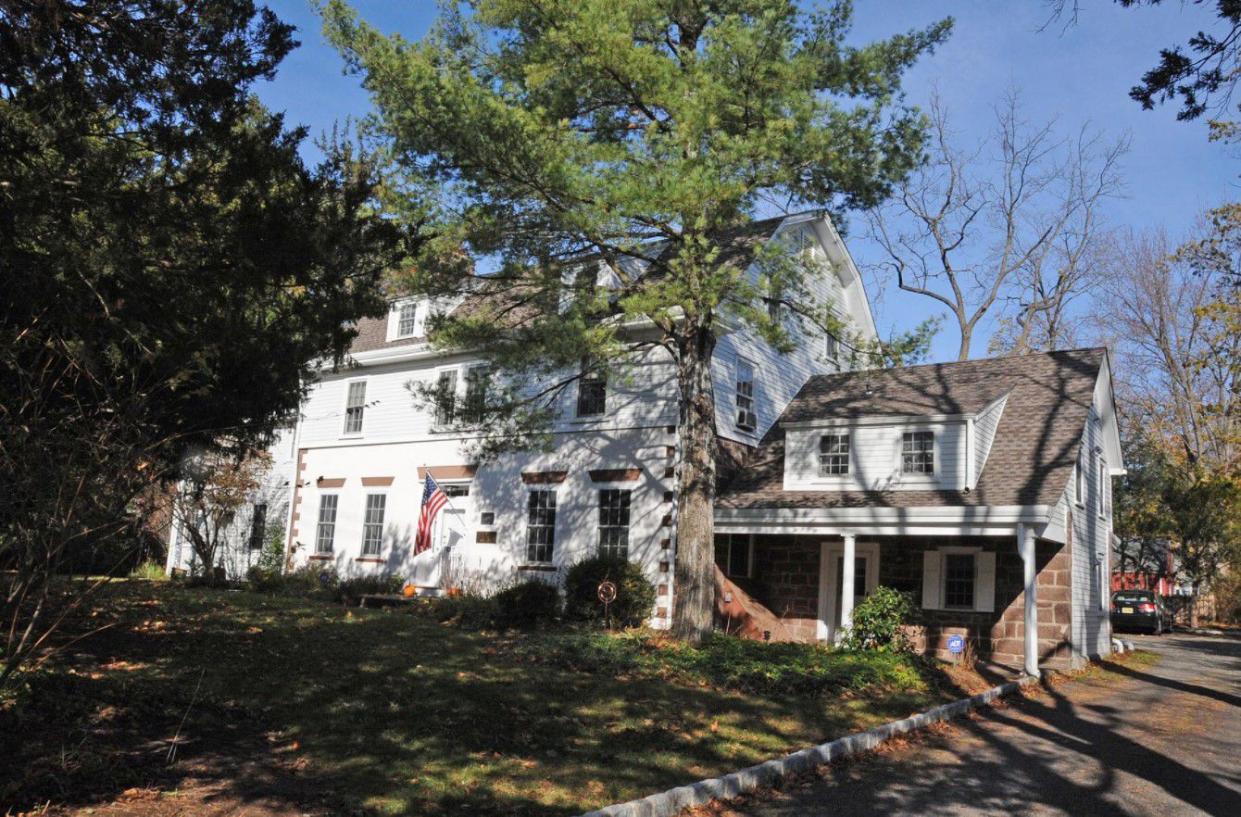
A village in Bergen County, Ridgewood is just northwest of New York City. The town is family friendly, with restaurants, coffee shops and parks.
- Population: 25,056
- Total Crime Rate (per 1,000 residents): 6.3
- Chance of Being a Victim: 1 in 158
- Major City Nearby: New York

Andover, about 23 miles north of Boston, was incorporated in 1646, and later became a thriving mill town. The city is home to prestigious college prep school Phillips Academy.
- Population: 36,356
- Total Crime Rate (per 1,000 residents): 6.1
- Chance of Being a Victim: 1 in 162
- Major City Nearby: Boston
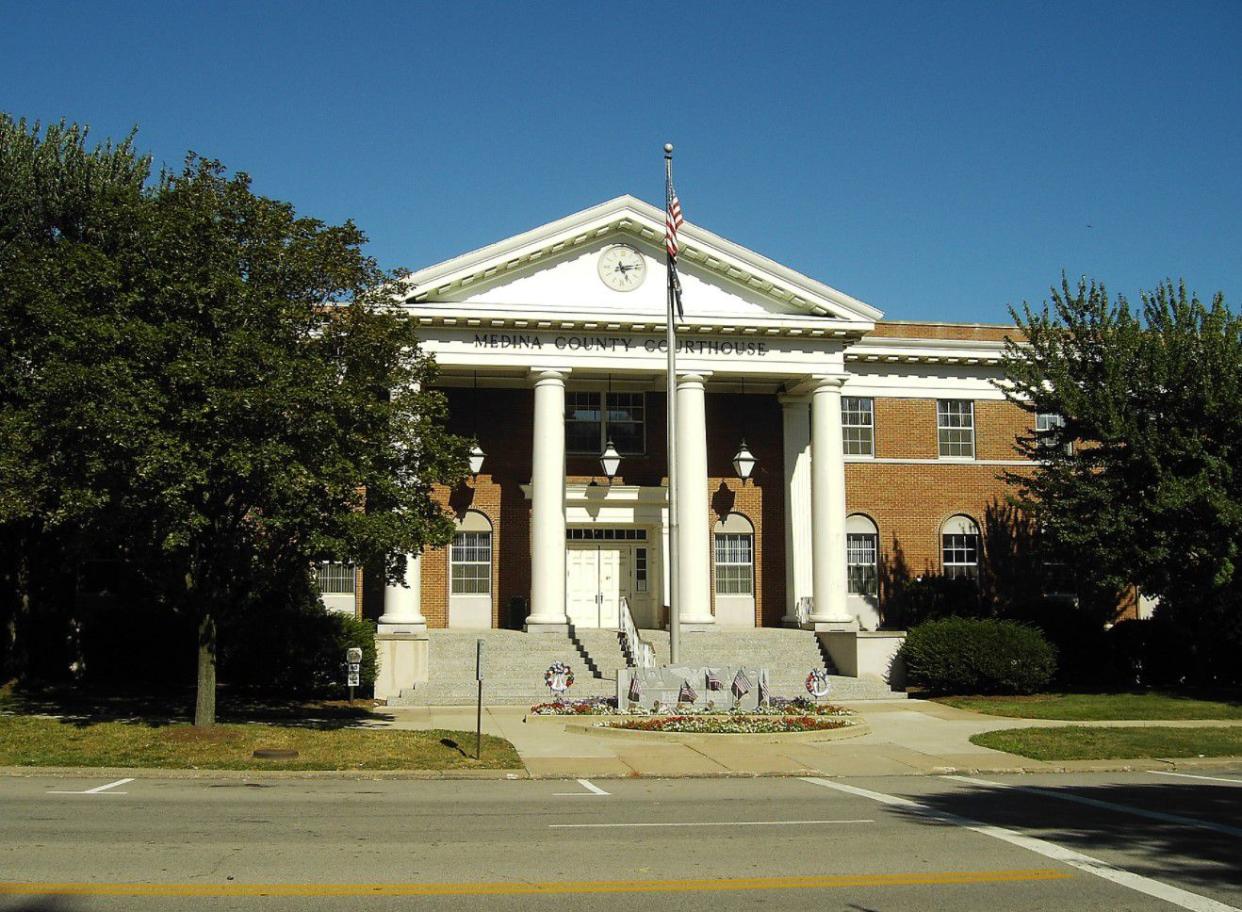
The largest city in Medina County, Brunswick is about 25 miles southwest of Cleveland. The median household income is nearly $70,000, and about 76% of residents own their own homes.
- Population: 34,880
- Total Crime Rate (per 1,000 residents): 5.9
- Chance of Being a Victim: 1 in 169
- Major City Nearby: Cleveland
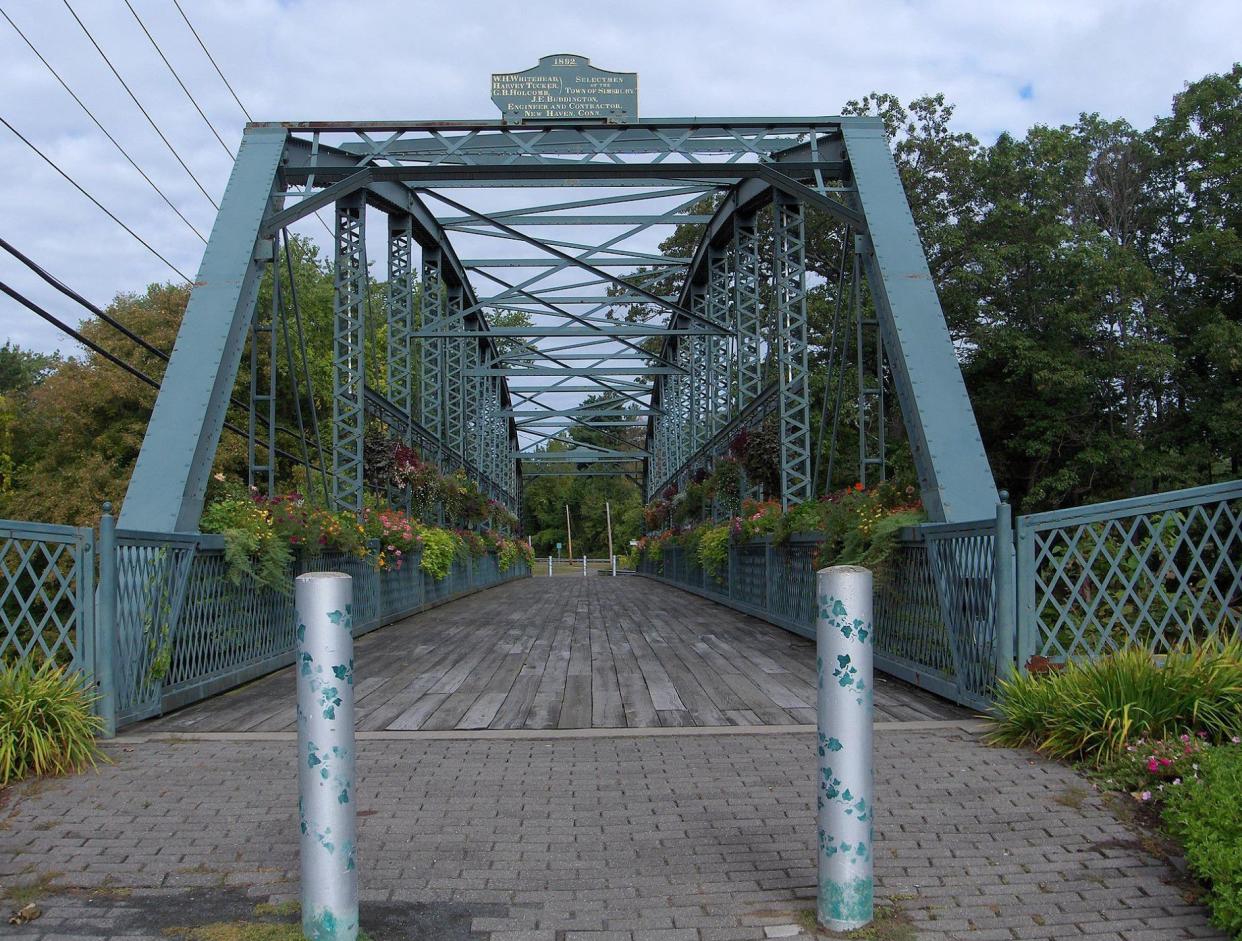
Mark Twain used to make the 10-mile walk from his home in Hartford to Talcott Mountain in this historic burg, which counts itself among the safest in Connecticut. The town comprises just under 10,000 households with a median household income of about $124,000.
- Population: 25,395
- Total Crime Rate (per 1,000 residents): 5.8
- Chance of Being a Victim: 1 in 170
- Major City Nearby: Hartford
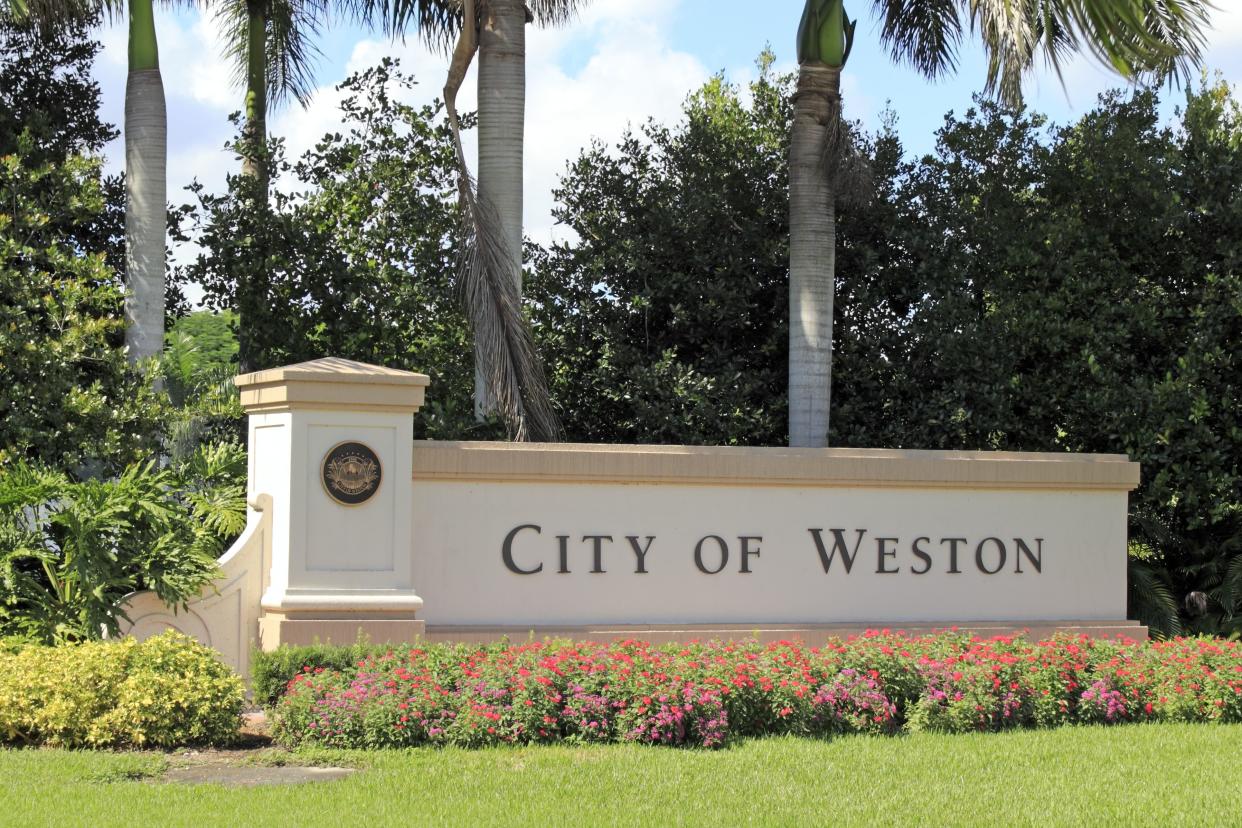
The only Florida town to make the list, Weston is also the second largest by population, after Newton, Massachusetts.
- Population: 71,166
- Total Crime Rate (per 1,000 residents): 5.8
- Chance of Being a Victim: 1 in 170
- Major City Nearby: Miami
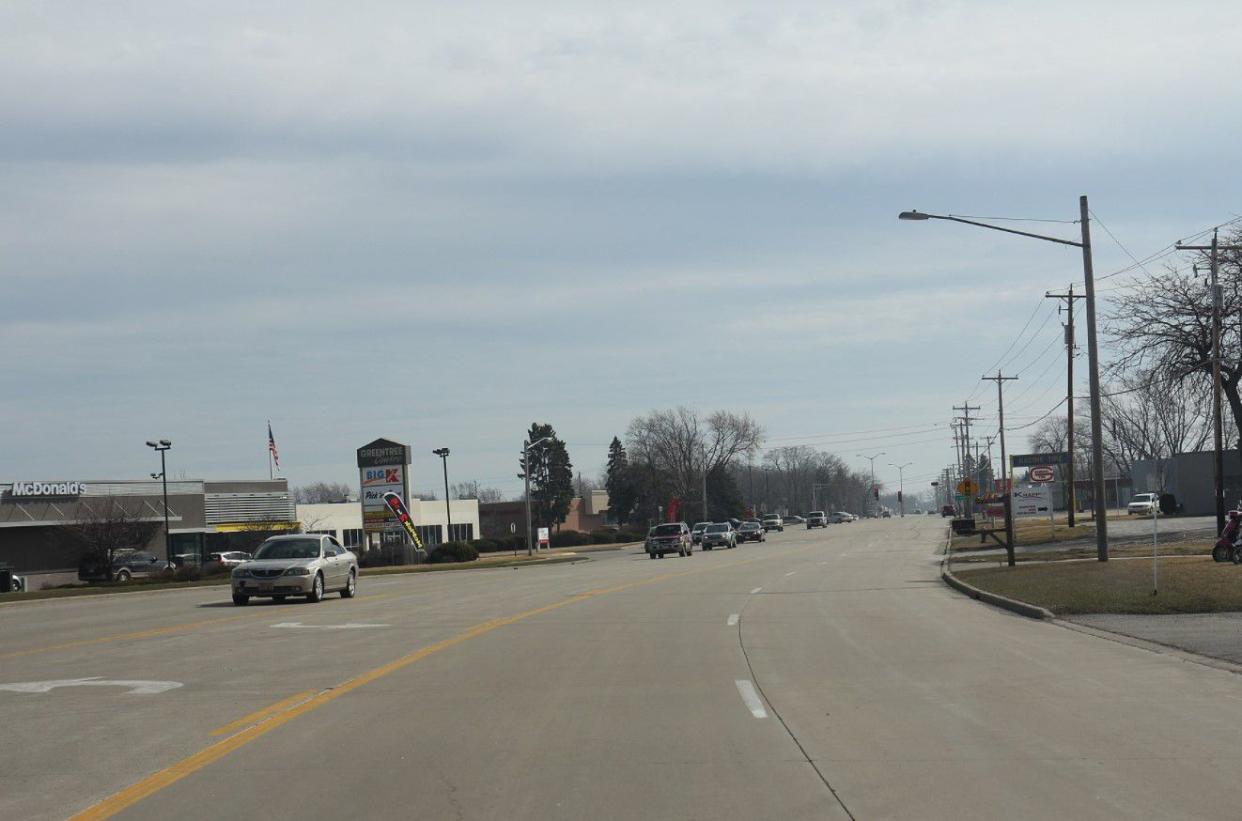
With humble beginnings as a fur trading post in the 1830s, Caledonia has grown to a city of over 25,000.
- Population: 25,277
- Total Crime Rate (per 1,000 residents): 5.8
- Chance of Being a Victim: 1 in 170
- Major City Nearby: Racine
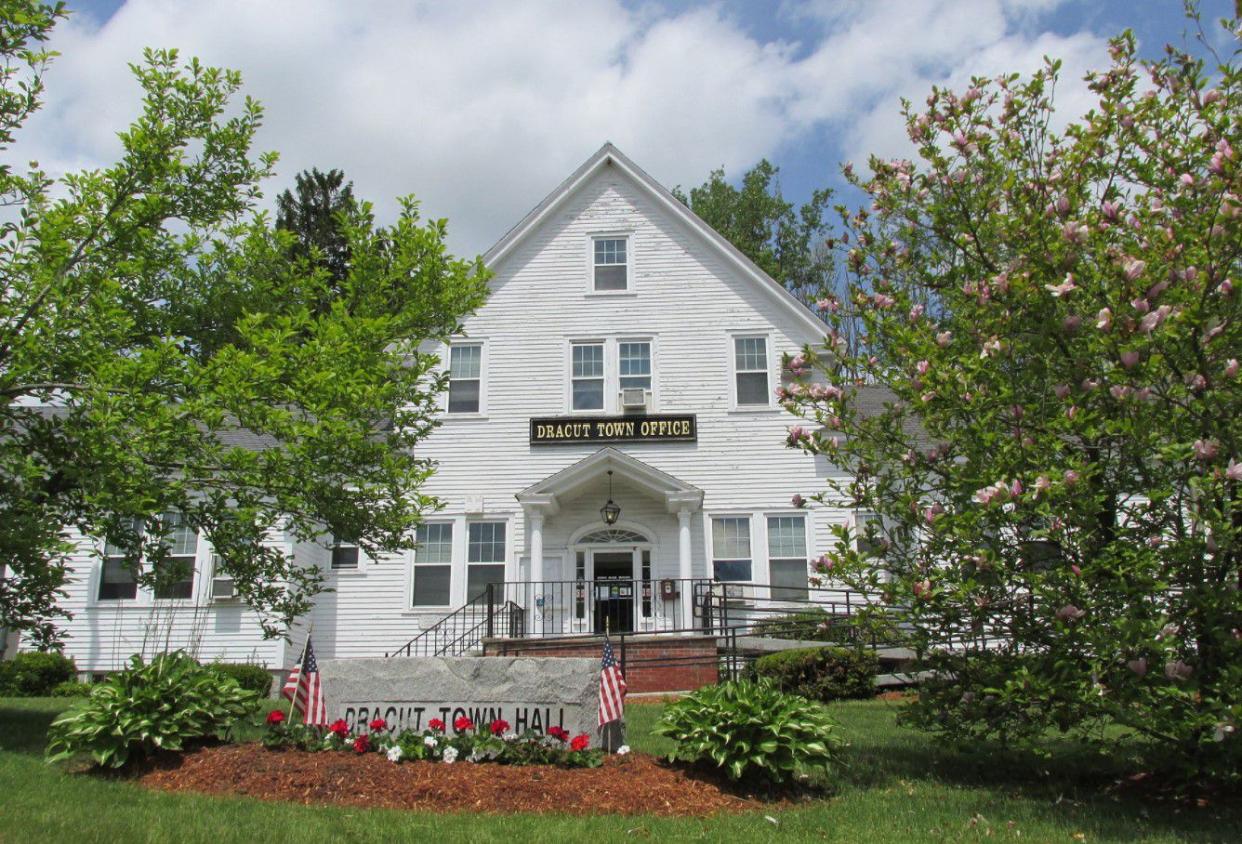
Dracut was home to Pennacook Indian settlements before Europeans arrived in the 1650s, and the town’s early economy depended on manufacturing and milling. The town provides easy access to the Lowell and Boston metropolitan areas.
- Population: 31,634
- Total Crime Rate (per 1,000 residents): 5.6
- Chance of Being a Victim: 1 in 178
- Major City Nearby: Boston

This city northwest of Chicago has a mix of residential, commercial and light industrial space with award-winning schools. Palatine is the largest Illinois city to make the list.
- Population: 67,482
- Total Crime Rate (per 1,000 residents): 5.5
- Chance of Being a Victim: 1 in 181
- Major City Nearby: Chicago
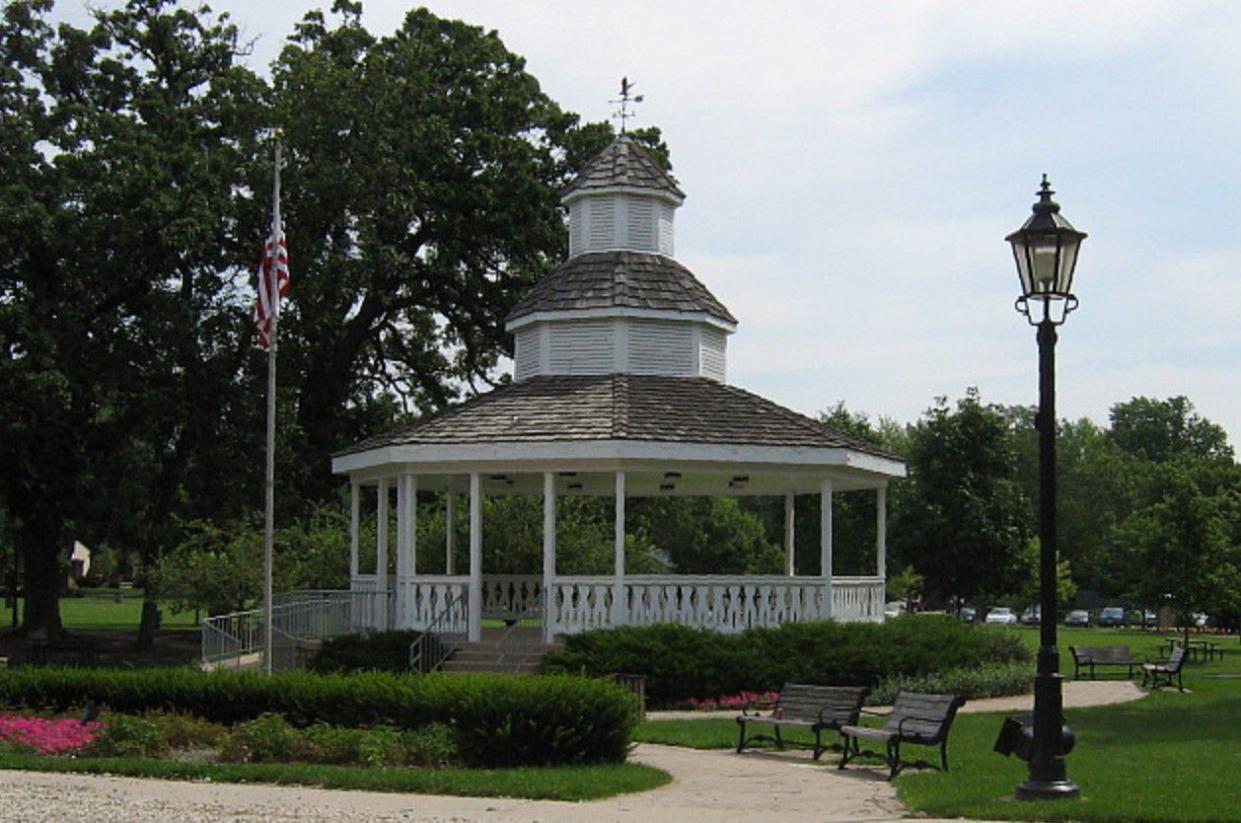
Built at the intersection of the Chicago and Pacific railways, the town of Bartlett was officially incorporated in 1891. The city experienced a boom in population starting in the 1950s and has since grown to include more than 40,000 residents.
- Population: 40,647
- Total Crime Rate (per 1,000 residents): 5.3
- Chance of Being a Victim: 1 in 188
- Major City Nearby: Chicago
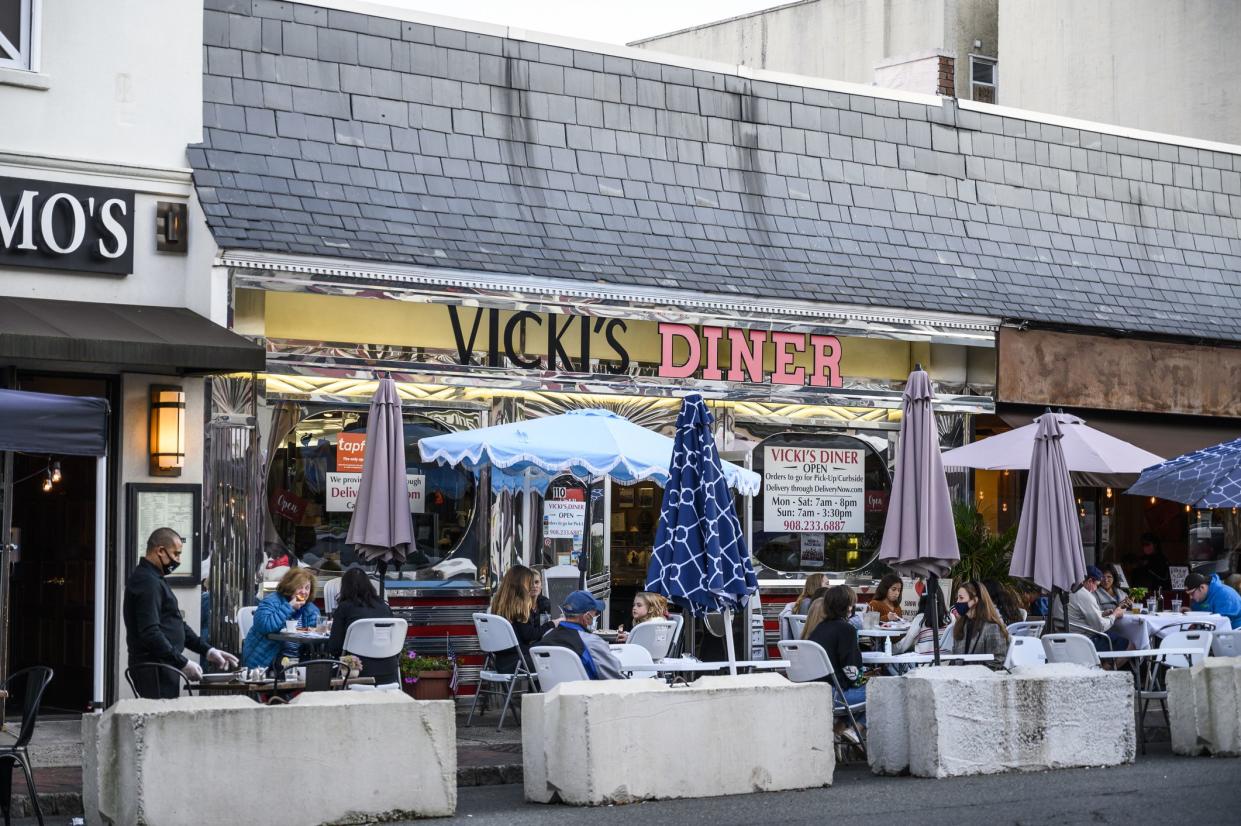
Westfield has an award-winning downtown with more than 450 shops, restaurants and services.
- Population: 29,512
- Total Crime Rate (per 1,000 residents): 5
- Chance of Being a Victim: 1 in 198
- Major City Nearby: New York
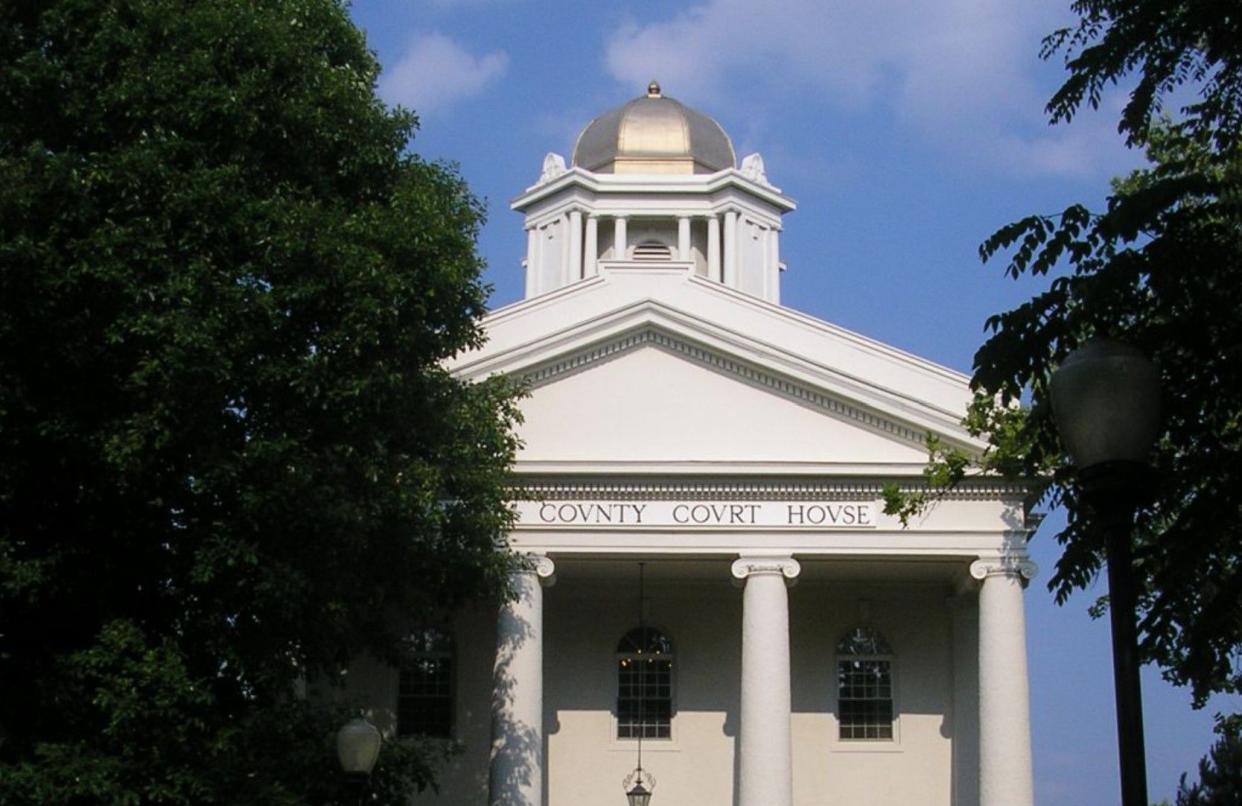
The only Kentucky town to make it on the list, Independence is a short drive across the Ohio River to Cincinnati.
- Population: 28,521
- Total Crime Rate (per 1,000 residents): 4.8
- Chance of Being a Victim: 1 in 205
- Major City Nearby: Cincinnati
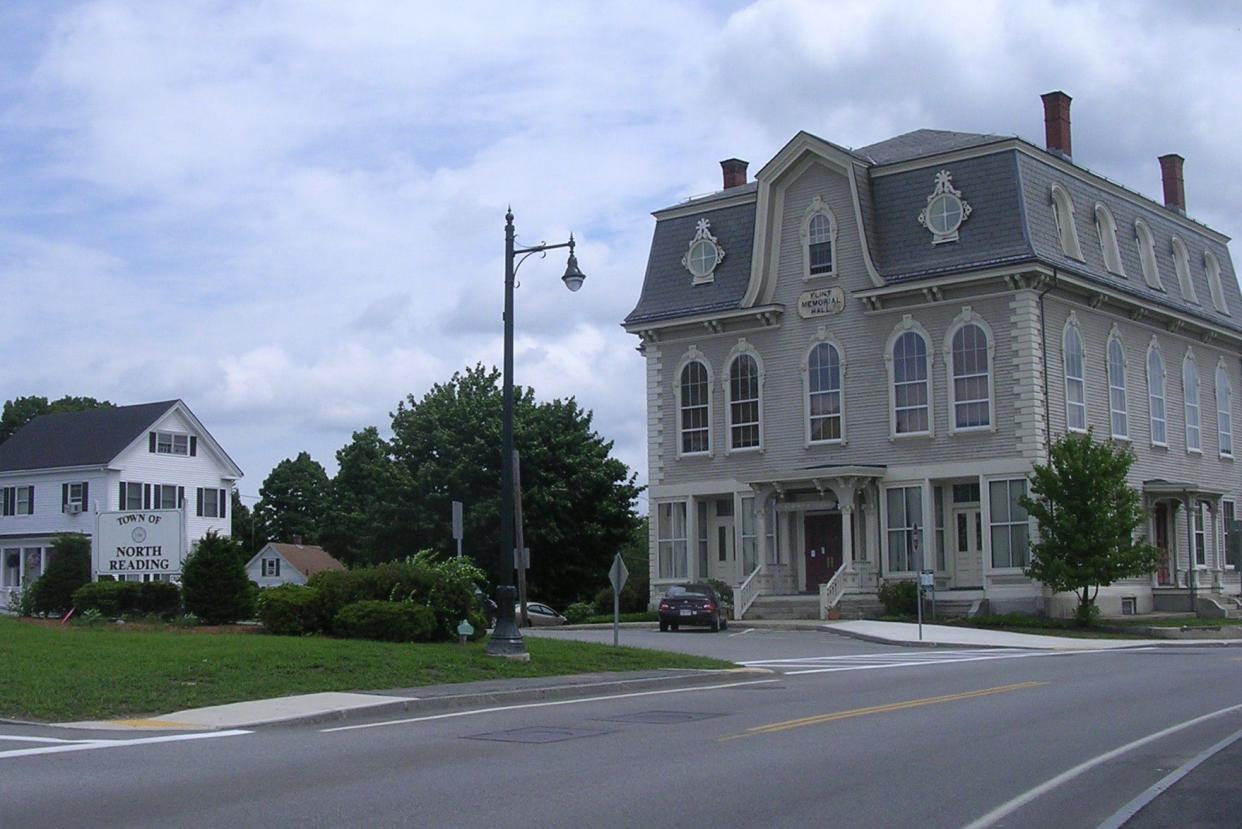
Another Boston suburb just north of the city, Reading is a town of about 9,000 households with a median household income of nearly $132,000.
- Population: 25,400
- Total Crime Rate (per 1,000 residents): 4.8
- Chance of Being a Victim: 1 in 206
- Major City Nearby: Boston
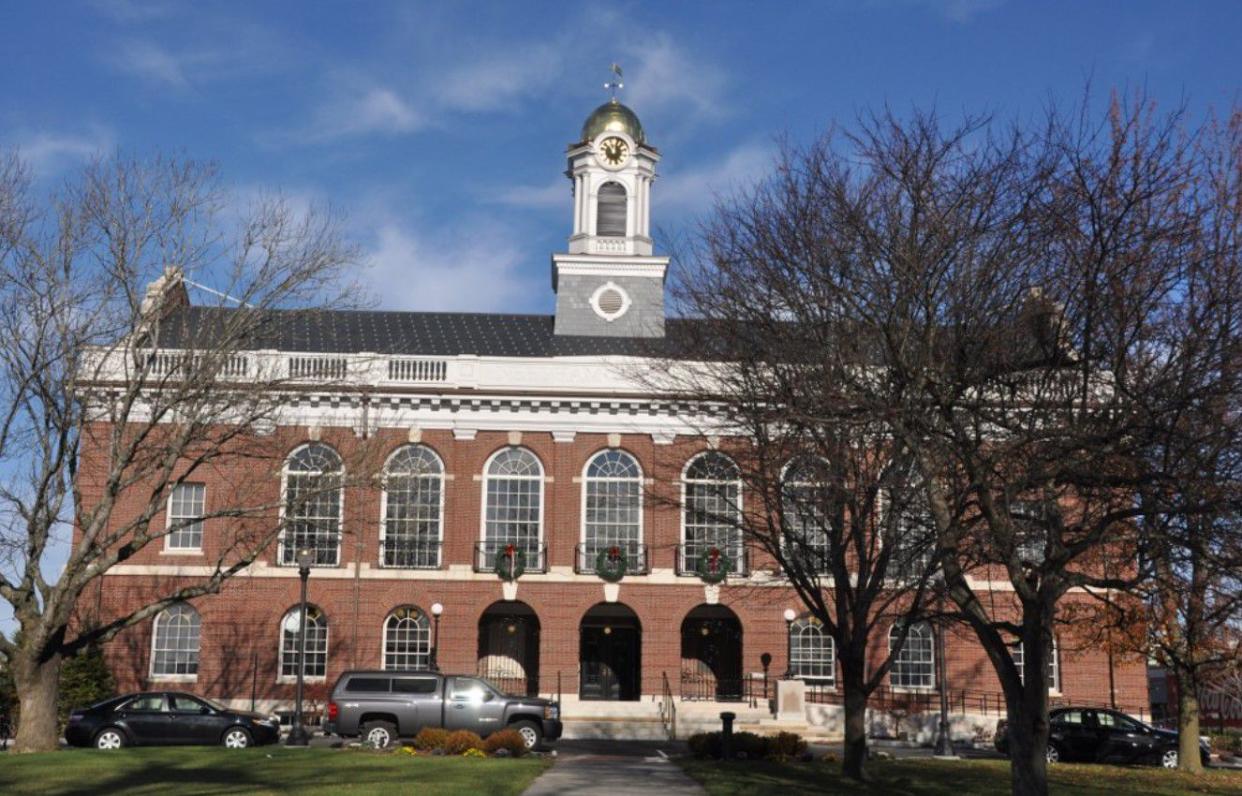
Like many of the Massachusetts cities on this list, Needham is a well-off bedroom community of Boston, with a median household income of about $165,000.
- Population: 31,388
- Total Crime Rate (per 1,000 residents): 4.7
- Chance of Being a Victim: 1 in 212
- Major City Nearby: Boston
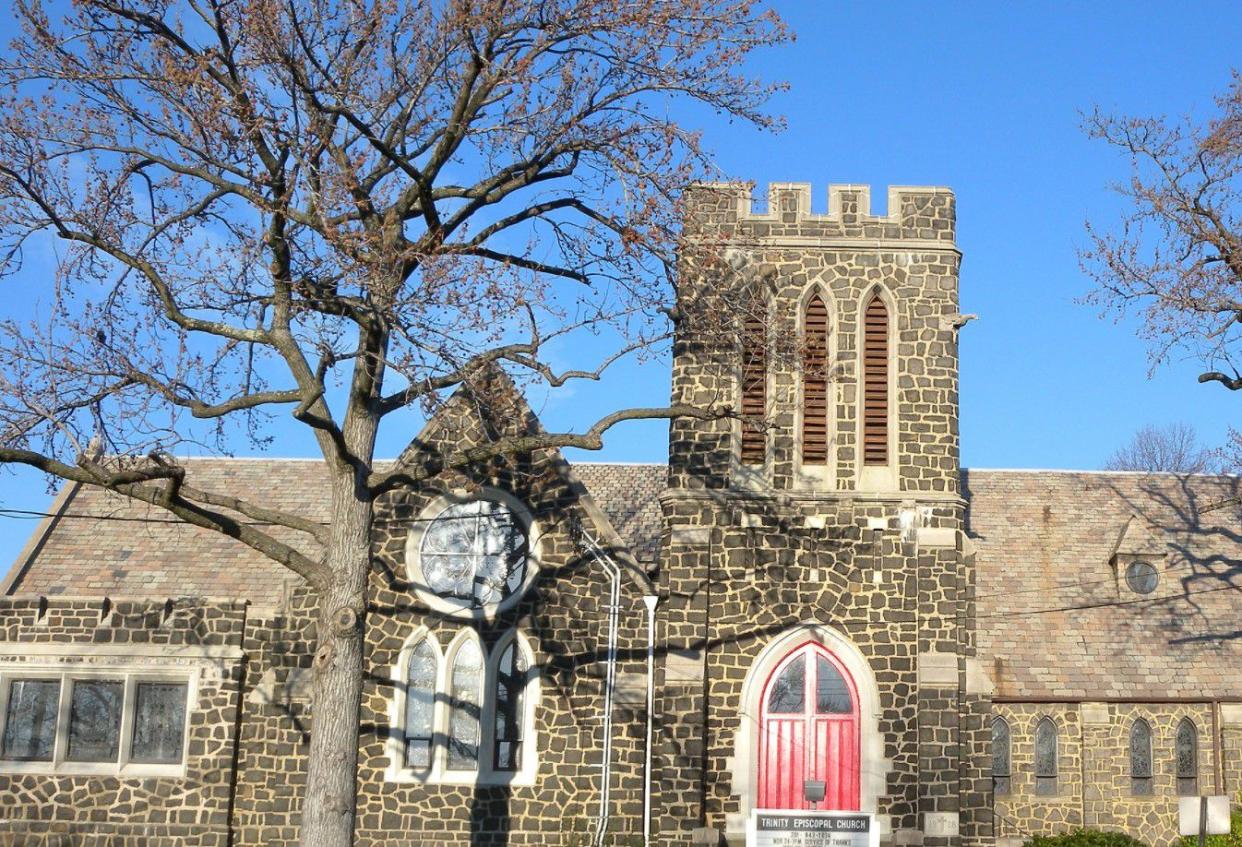
Cliffside has a commanding view of Manhattan from the top of the famed New Jersey palisades. Located between the Lincoln Tunnel and George Washington Bridge, the city allows commuters access to New York City.
- Population: 28,133
- Total Crime Rate (per 1,000 residents): 4.7
- Chance of Being a Victim: 1 in 212
- Major City Nearby: New York
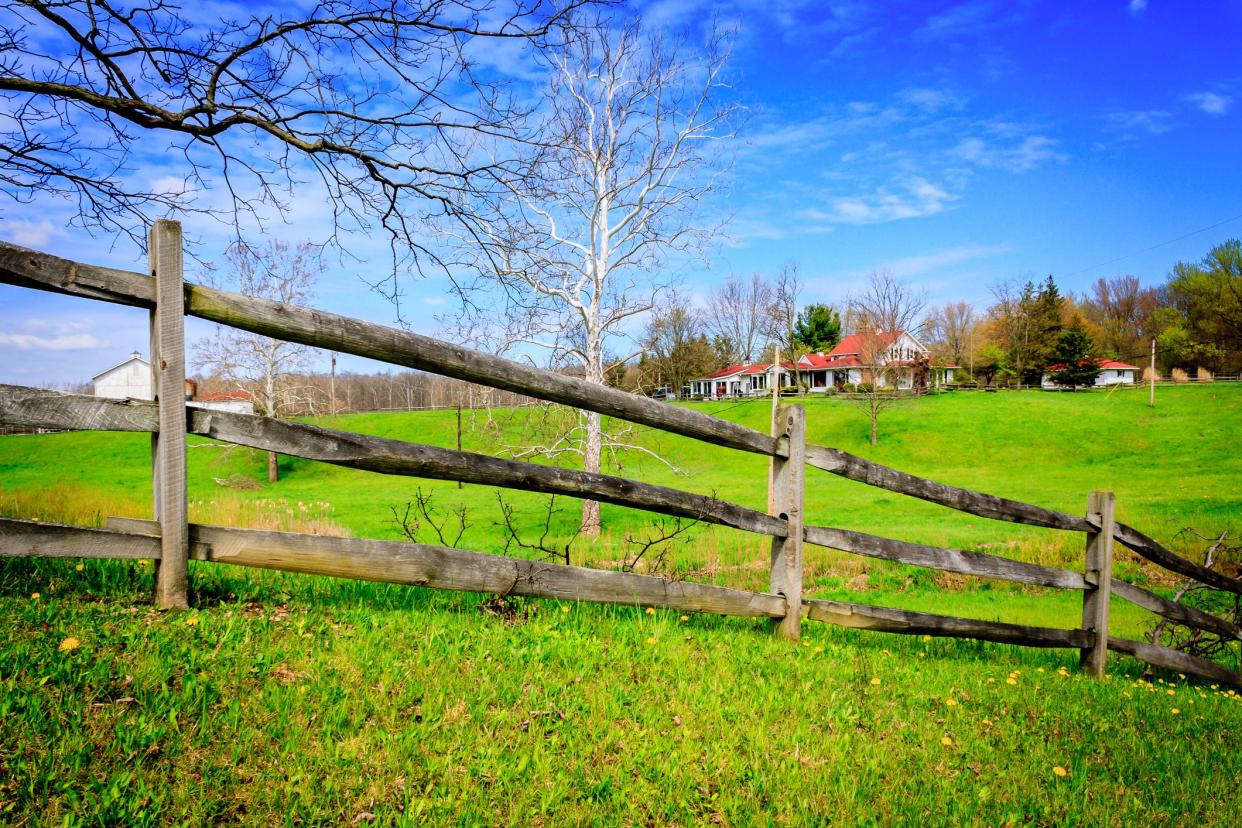
North Royalton sits just outside of Cleveland near the shores of Lake Erie. It was incorporated as a village in 1927 and became a city in 1961. The median household income is about $70,000 per year.
- Population: 30,068
- Total Crime Rate (per 1,000 residents): 4.6
- Chance of Being a Victim: 1 in 214
- Major City Nearby: Cleveland
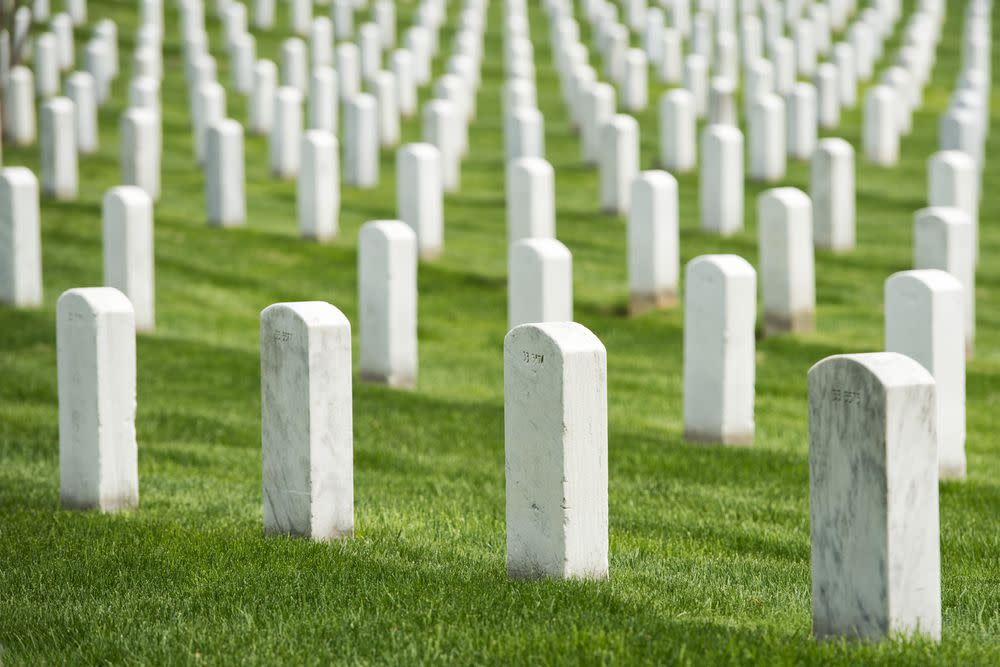
Settled in 1635 as the town of Menotomy, Arlington was renamed in 1867 in honor of those buried at Arlington National Cemetery. The city is just six miles from Boston.
- Population: 45,531
- Total Crime Rate (per 1,000 residents): 4.5
- Chance of Being a Victim: 1 in 217
- Major City Nearby: Boston
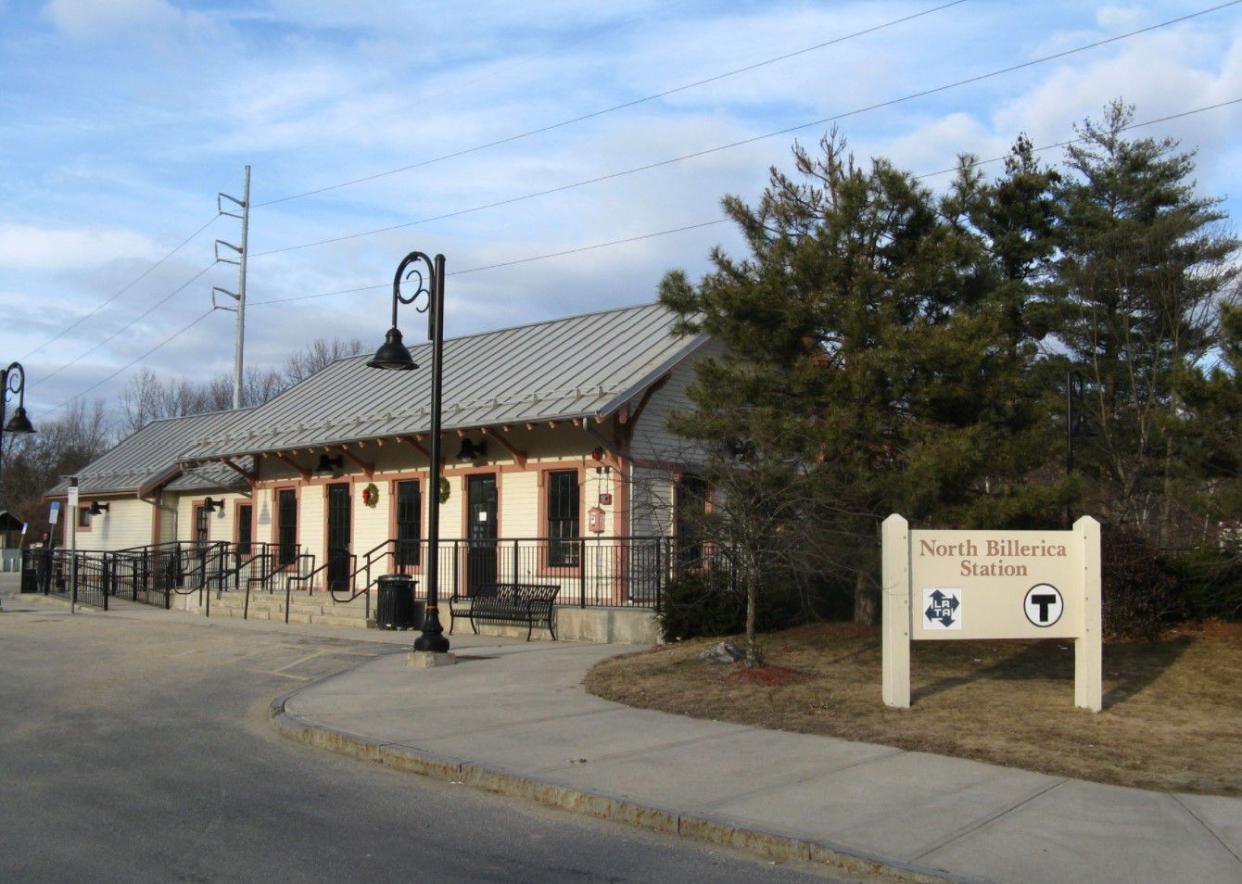
Billerica sits on the Shawsheen and Concord rivers about 20 miles northwest of Boston, and is home to about 15,000 households.
- Population: 43,367
- Total Crime Rate (per 1,000 residents): 4.5
- Chance of Being a Victim: 1 in 217
- Major City Nearby: Boston
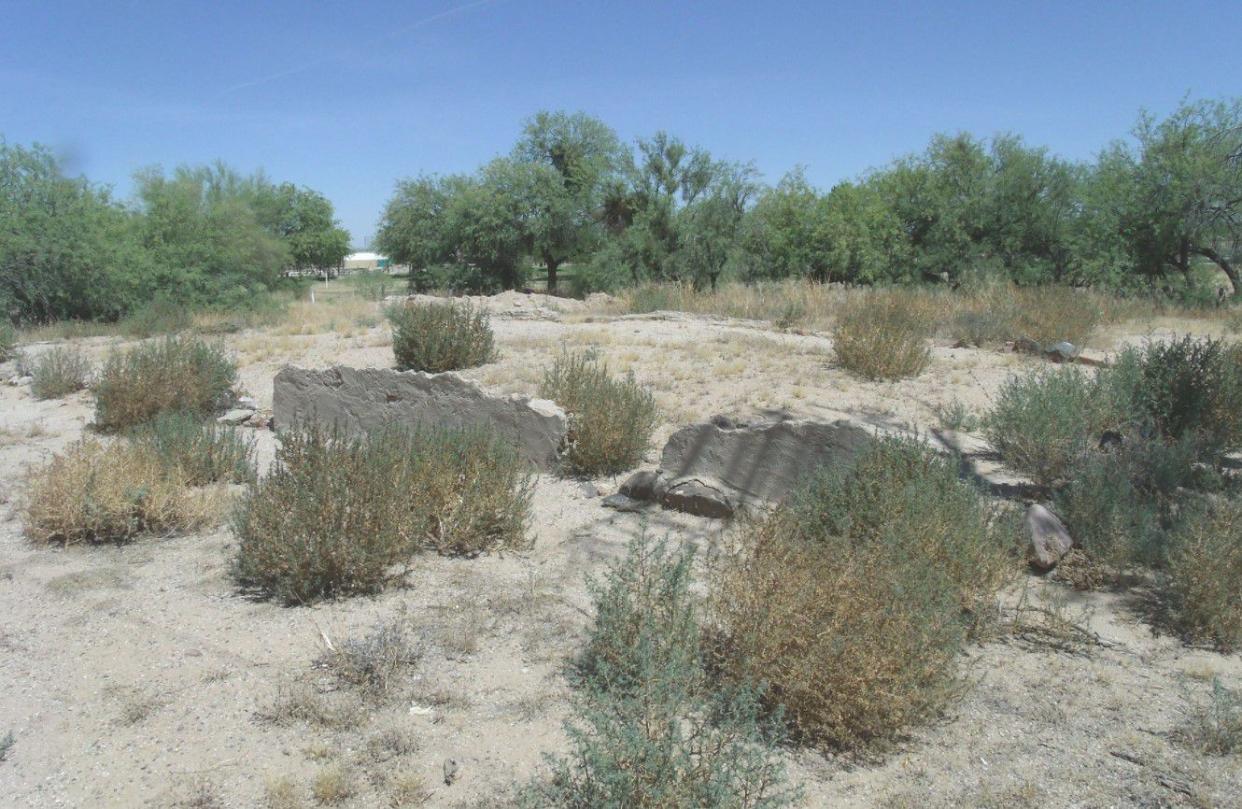
A bit farther from major metropolitan areas than many other cities on this list, Florence is 60 miles from Phoenix.
- Population: 27,422
- Total Crime Rate (per 1,000 residents): 4.3
- Chance of Being a Victim: 1 in 230
- Major City Nearby: Phoenix
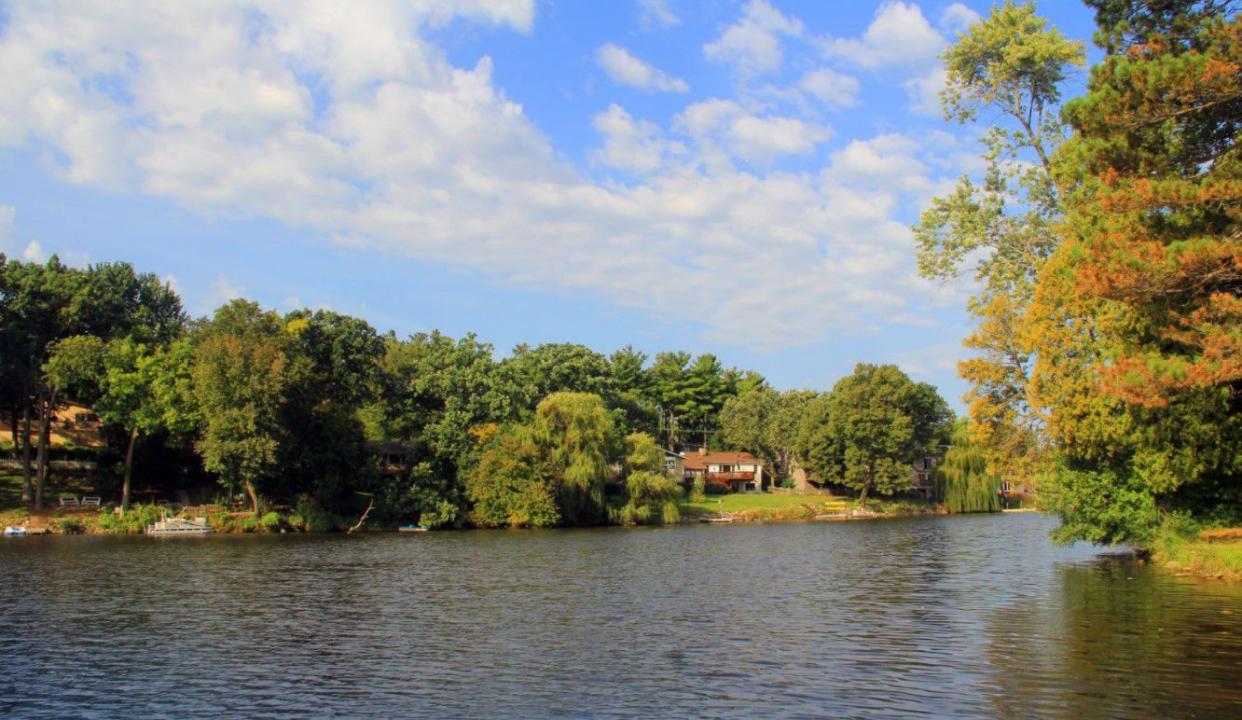
Once a sleepy rural community home to seasonal residents who enjoyed the area’s lakes, Lake in the Hills has become a quickly growing suburb of Chicago in the last few decades.
- Population: 28,634
- Total Crime Rate (per 1,000 residents): 4.3
- Chance of Being a Victim: 1 in 230
- Major City Nearby: Chicago

Rexburg, in eastern Idaho, is one of the only cities on this list that’s not near a major metropolitan area. Its proximity to nature is one of its calling cards. Yellowstone National Park is just 80 miles away.
- Population: 29,400
- Total Crime Rate (per 1,000 residents): 4.3
- Chance of Being a Victim: 1 in 231
- Major City Nearby: N/A
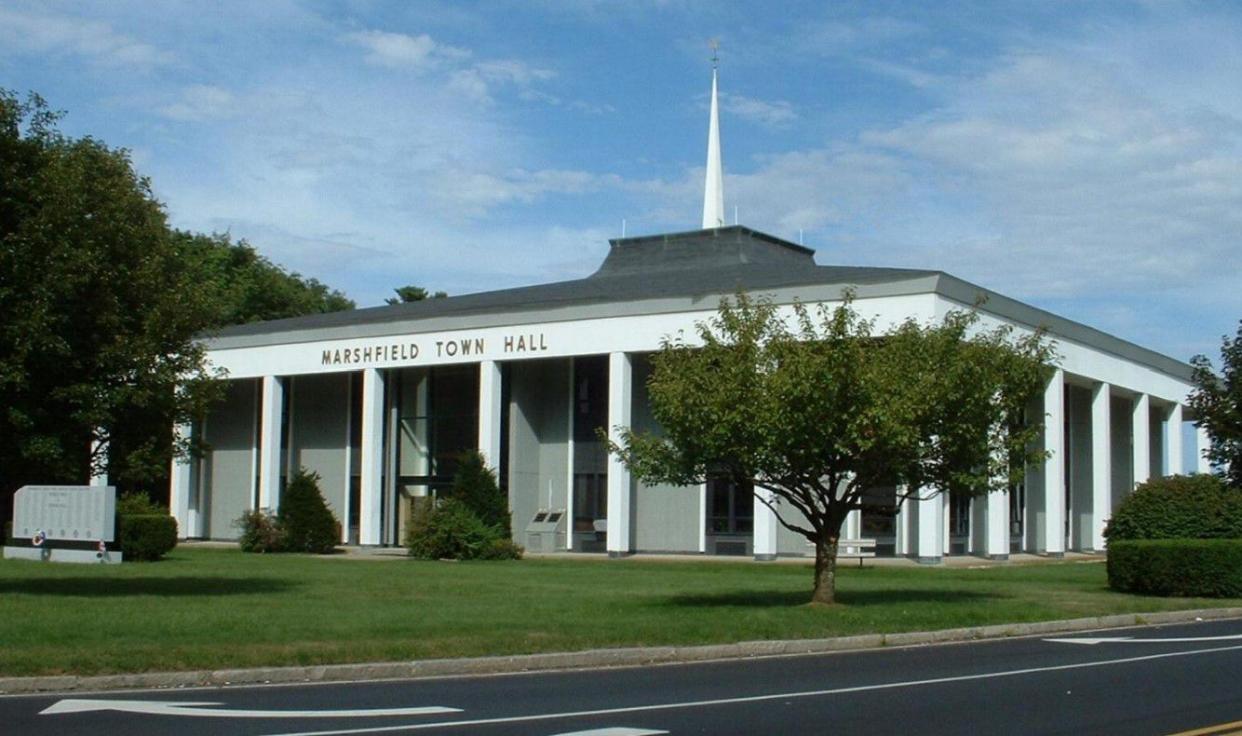
Marshfield is 30 miles from Boston on the South Shore where Cape Cod meets the Massachusetts Bay. The year-round population of about 25,000 grows to 40,000 in the summer months.
- Population: 25,967
- Total Crime Rate (per 1,000 residents): 4
- Chance of Being a Victim: 1 in 249
- Major City Nearby: Boston
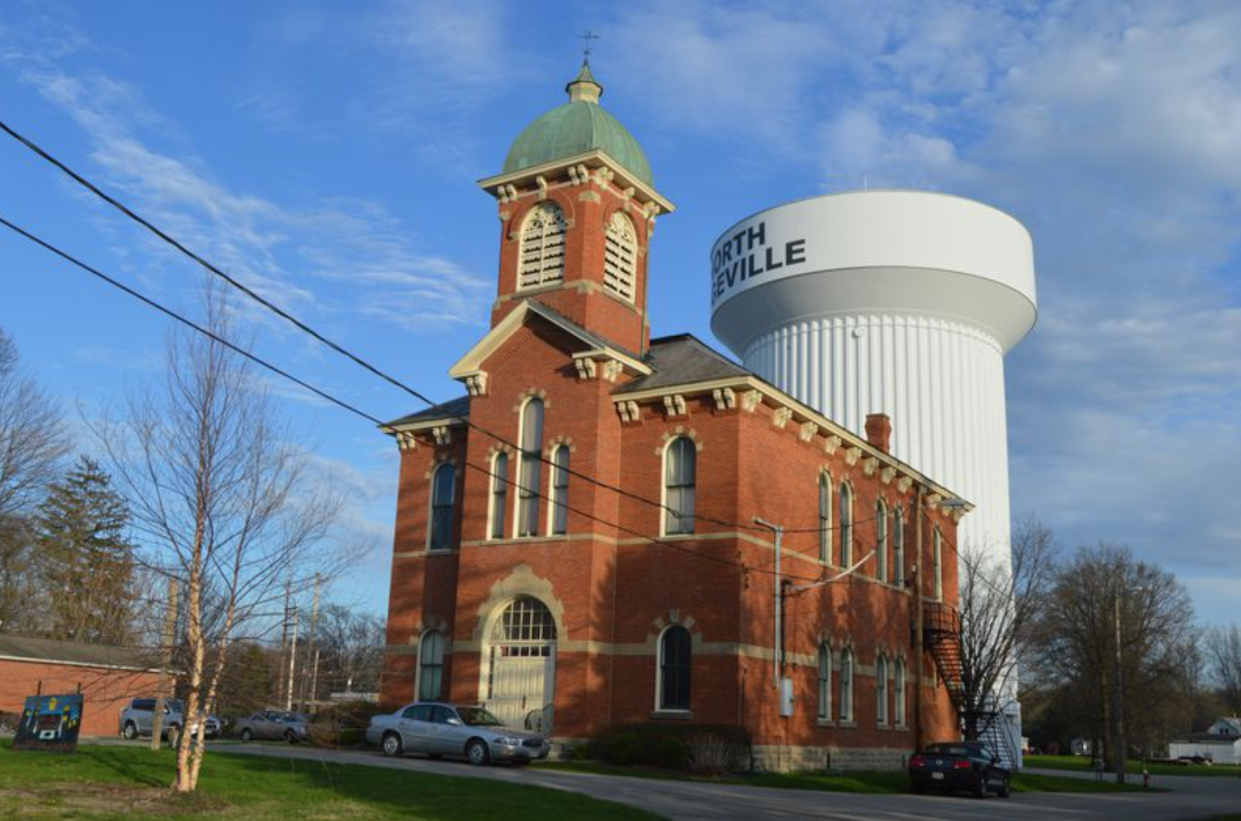
Cleveland Magazine named this swiftly growing suburb one of the “Best Places to Live in the Cleveland Area.”
- Population: 34,392
- Total Crime Rate (per 1,000 residents):3.6
- Chance of Being a Victim: 1 in 275
- Major City Nearby: Cleveland
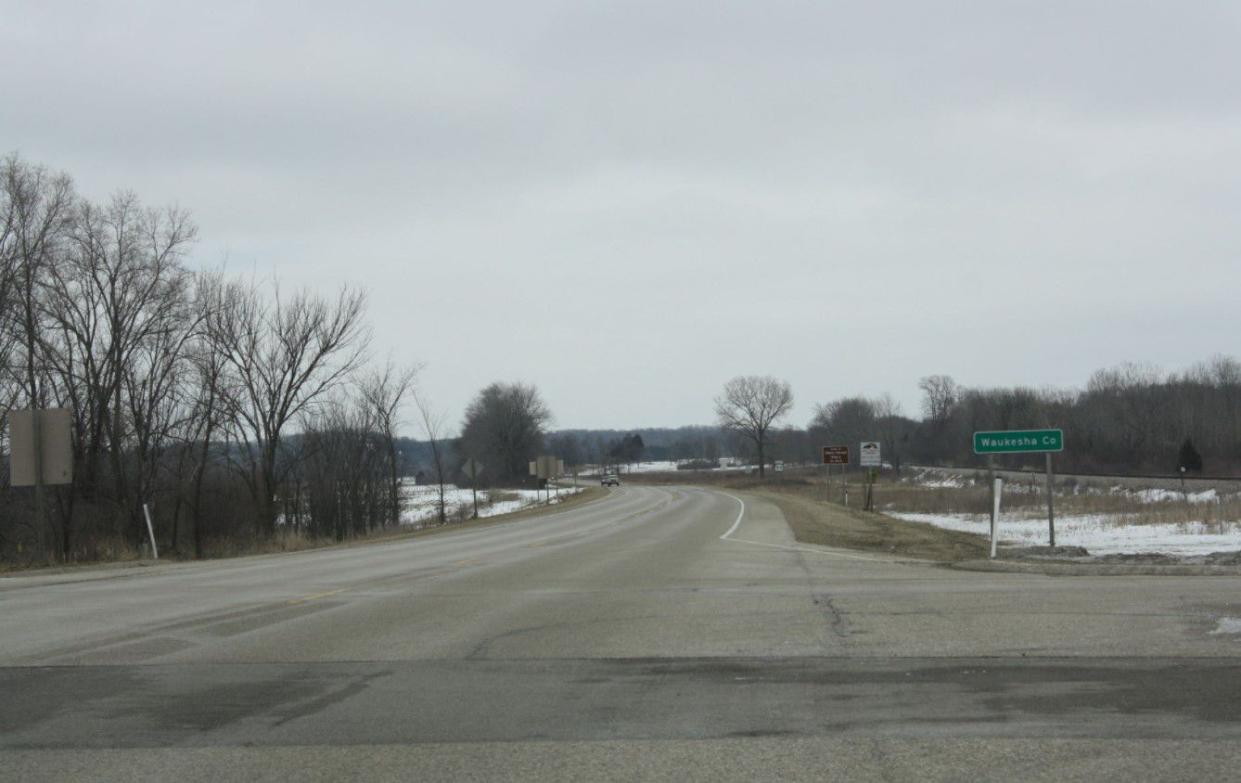
This cozy city sits within the orbit of Milwaukee and within the greater Chicago area.
- Population: 25,127
- Total Crime Rate (per 1,000 residents):3.5
- Chance of Being a Victim: 1 in 279
- Major City Nearby: Milwaukee
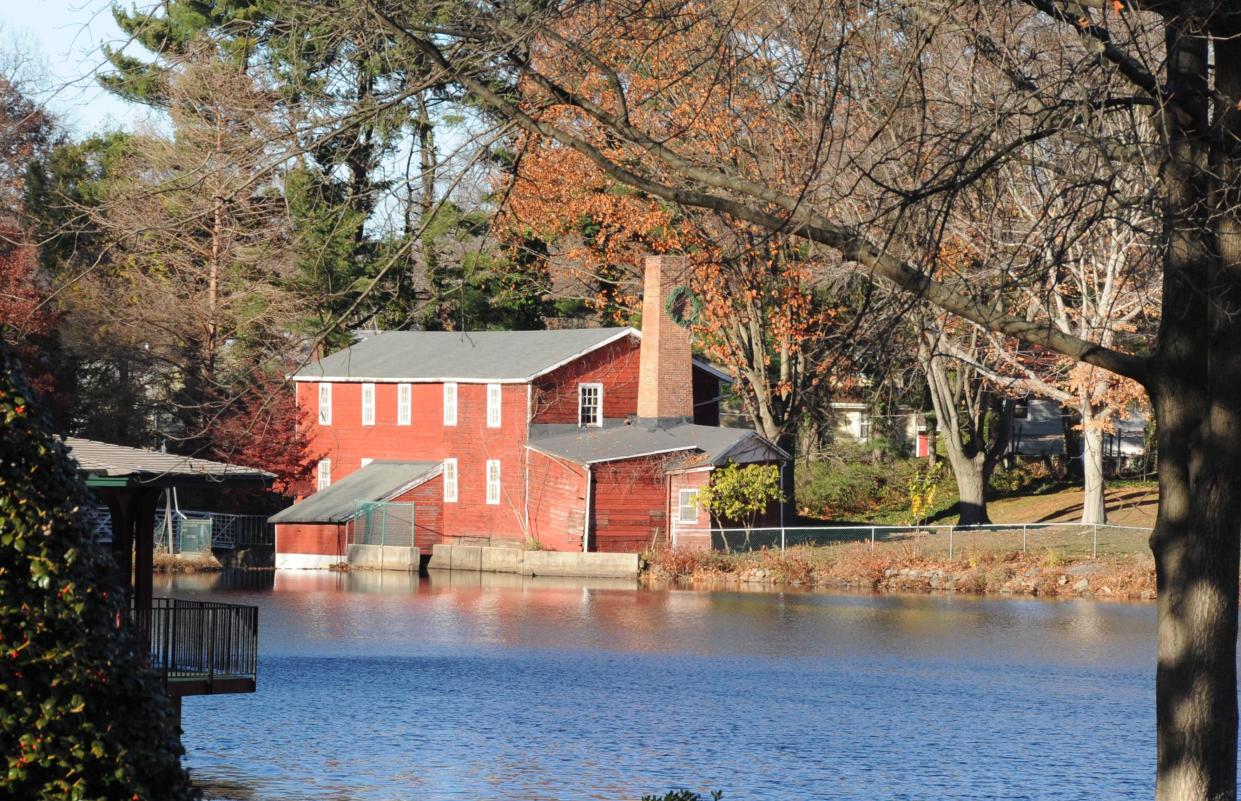
The Borough of Bergenfield, which sits across the Hudson River from Yonkers, was first settled by the Dutch. The postwar period brought a boom, with the population reaching its peak in the 1970s.
- Population: 27,327
- Total Crime Rate (per 1,000 residents):3.4
- Chance of Being a Victim: 1 in 296
- Major City Nearby: New York
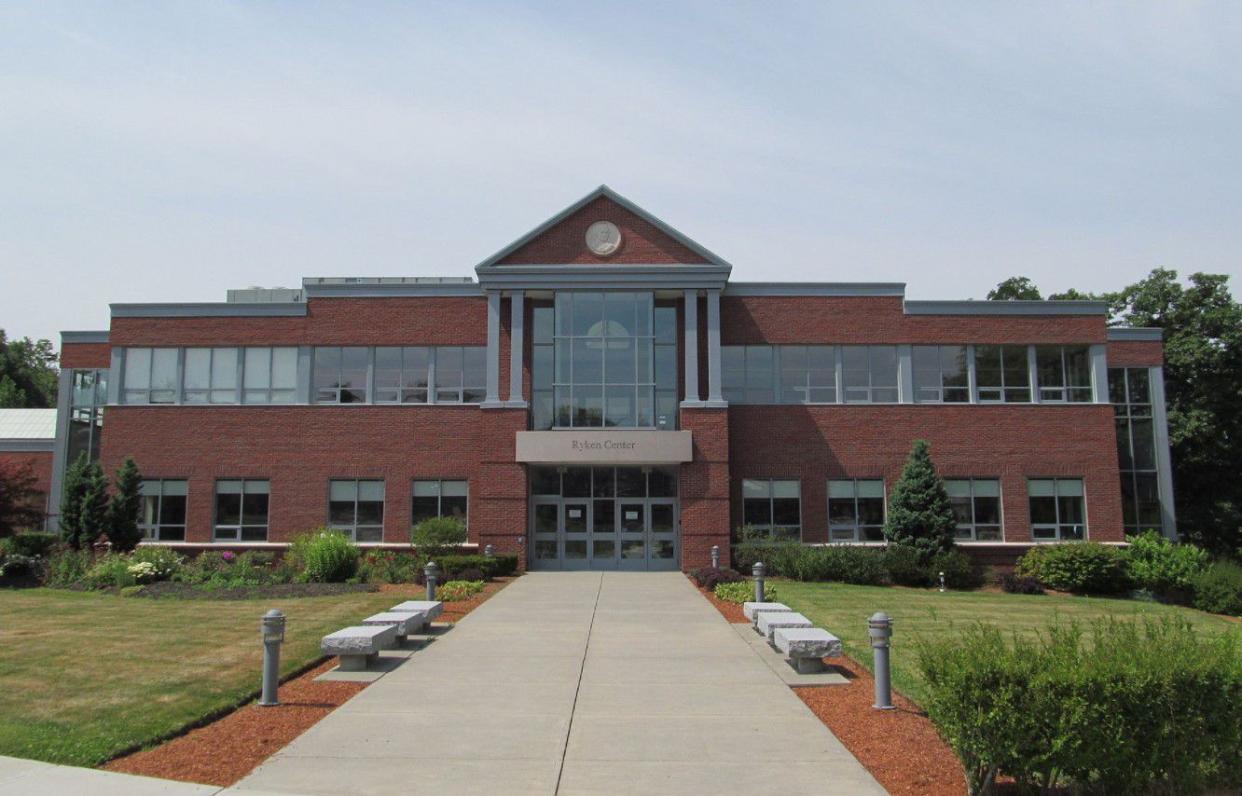
Shrewsbury was incorporated in 1727 and rests just outside the Boston metropolitan area near the city of Worcester.
- Population: 38,526
- Total Crime Rate (per 1,000 residents): 3.3
- Chance of Being a Victim: 1 in 296
- Major City Nearby: Worcester
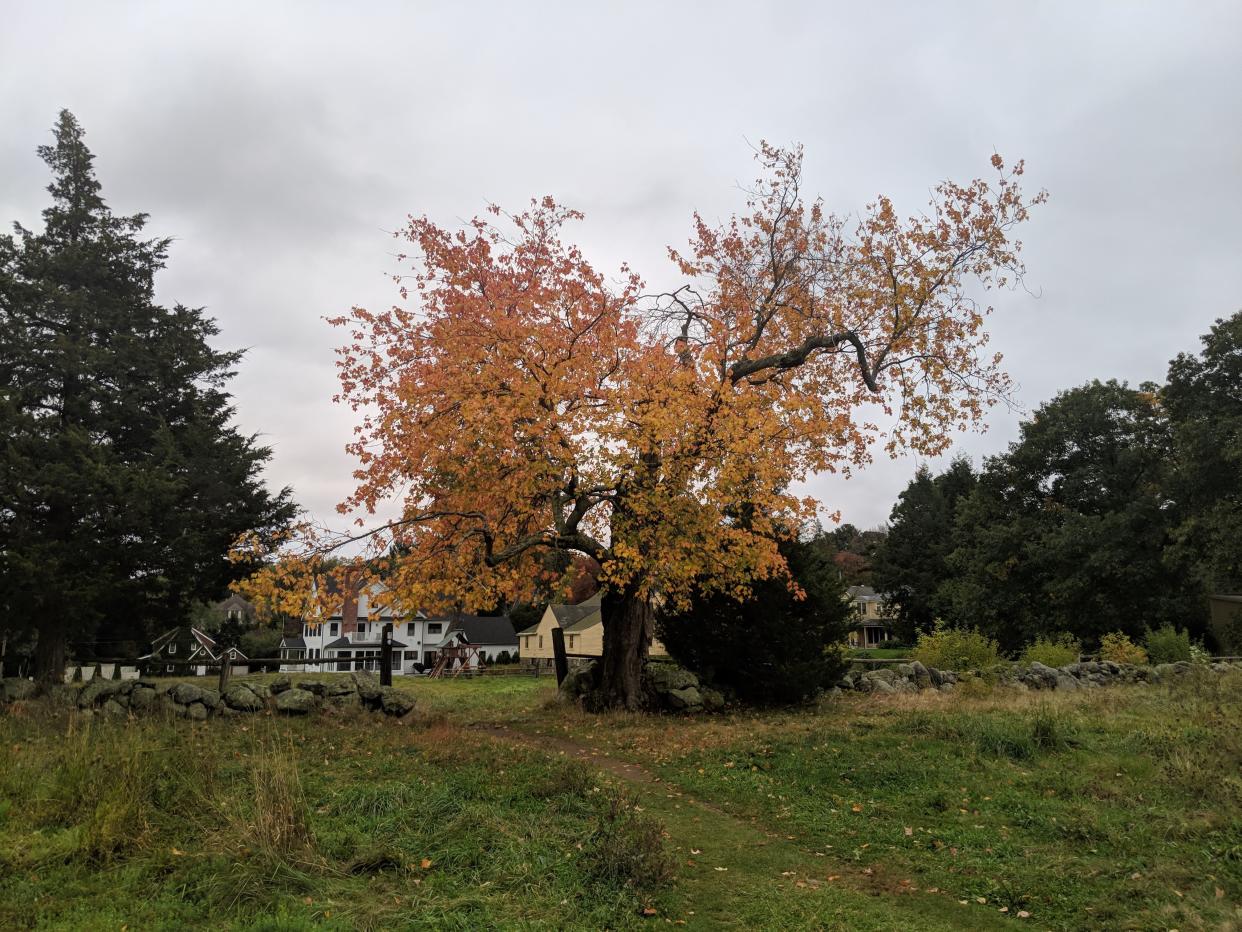
Known as the town where the first shots of the Revolutionary War were fired, Lexington is a suburb of Boston where the median household income tops $186,000.
- Population: 33,132
- Total Crime Rate (per 1,000 residents): 3
- Chance of Being a Victim: 1 in 331
- Major City Nearby: Boston
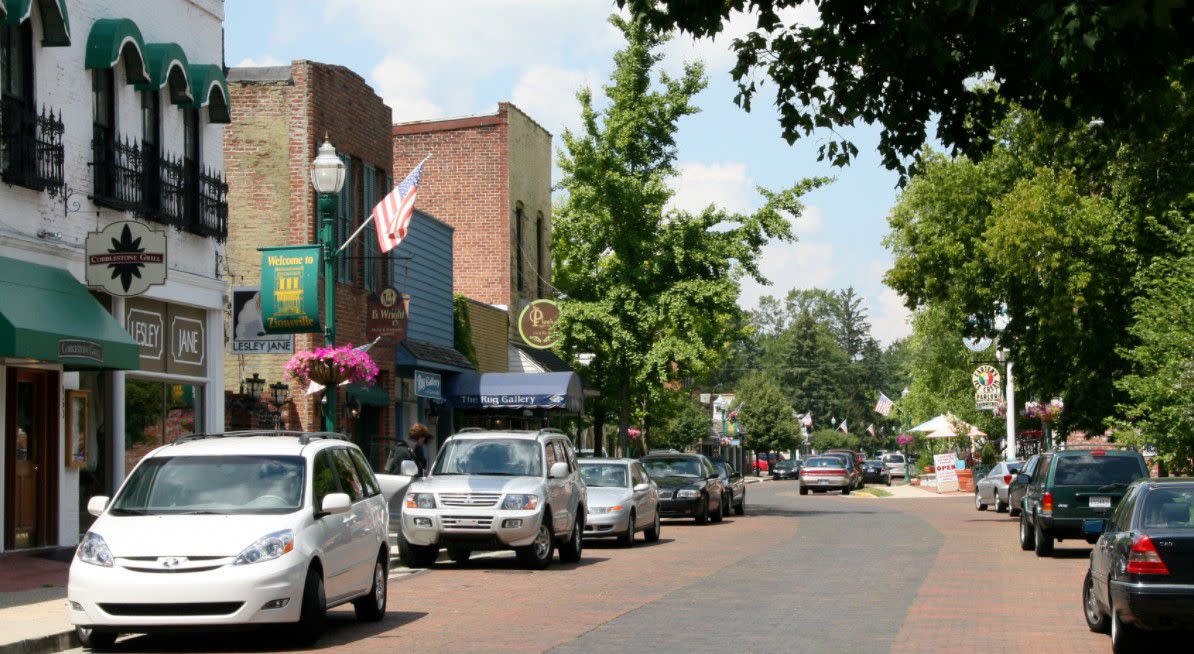
Excellent schools and stable home values attract residents looking for a small-town feel just 20 minutes outside Indianapolis.
- Population: 28,357
- Total Crime Rate (per 1,000 residents): 2.8
- Chance of Being a Victim: 1 in 345
- Major City Nearby: Indianapolis
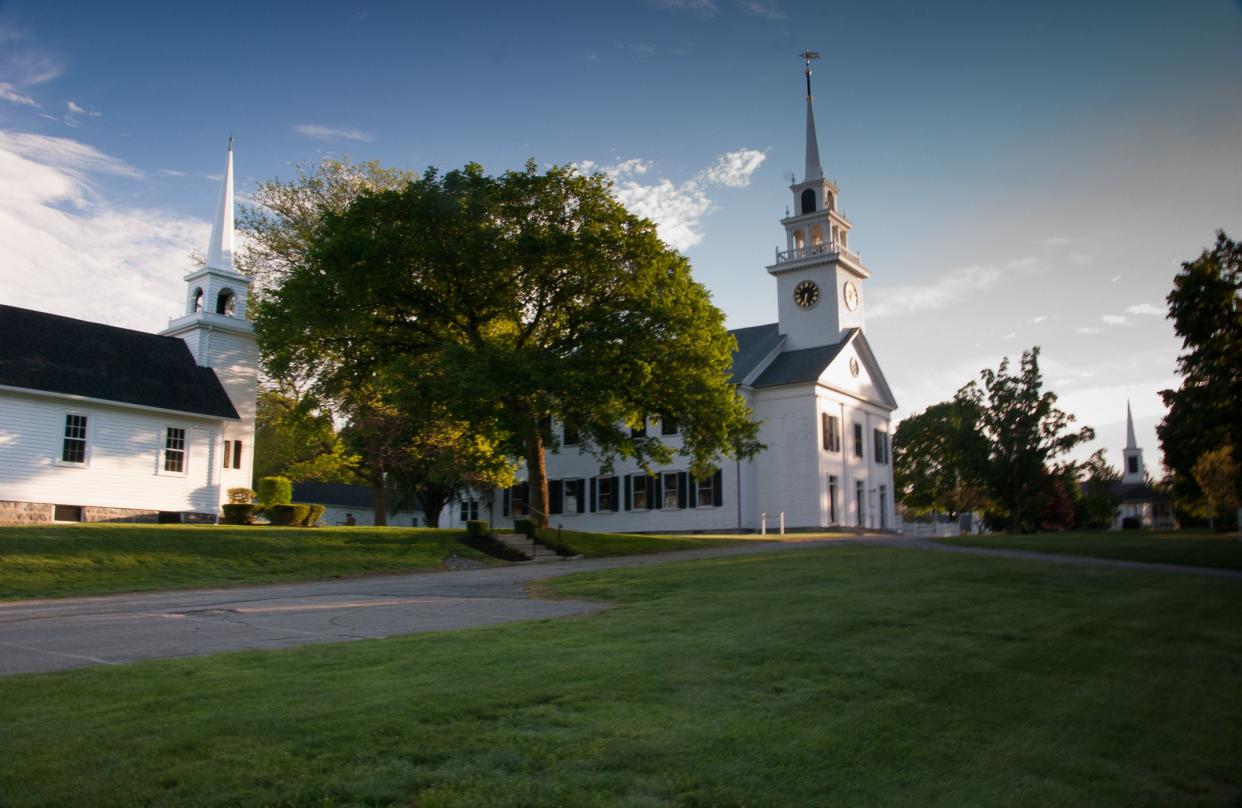
In Milton, a suburb 10 miles south of Boston, the median household income is over $133,000 a year.
- Population: 27,593
- Total Crime Rate (per 1,000 residents): 2.7
- Chance of Being a Victim: 1 in 367
- Major City Nearby: Boston
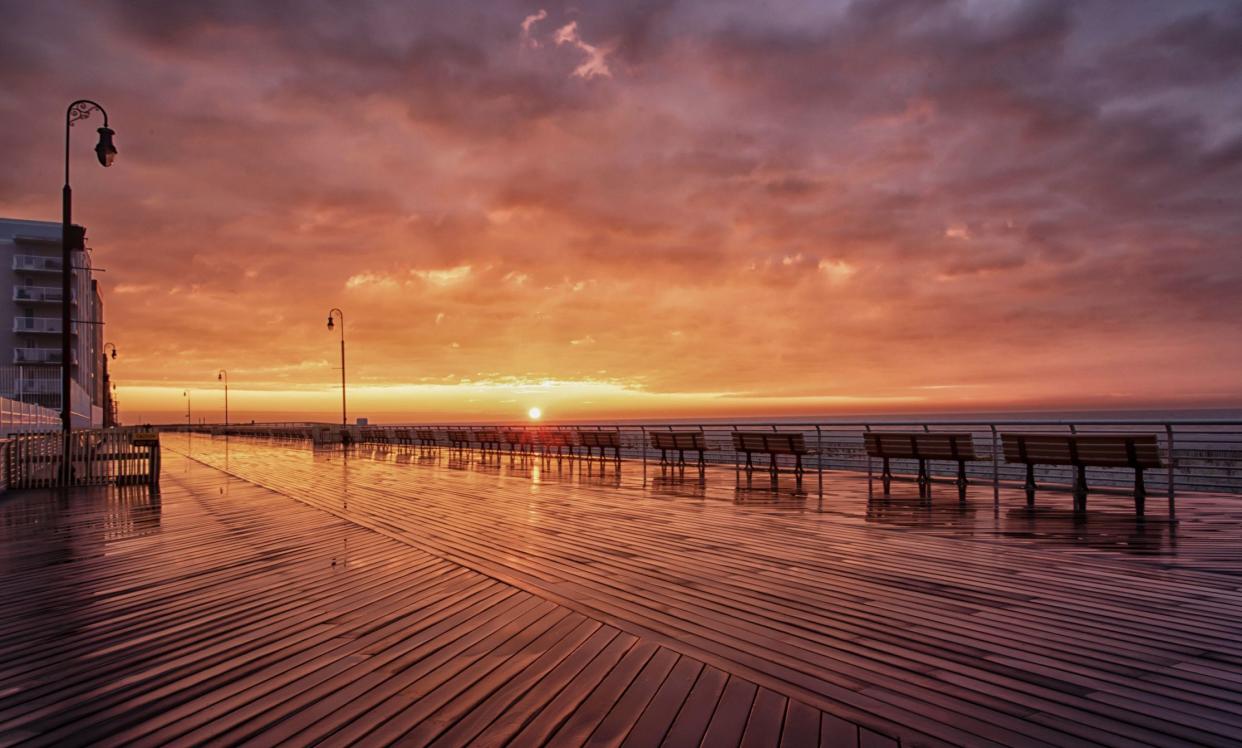
Long Beach is in Nassau County, east of New York City. This beachside community is a popular tourist destination during the summer.
- Population: 33,454
- Total Crime Rate (per 1,000 residents): 2.5
- Chance of Being a Victim: 1 in 389
- Major City Nearby: New York
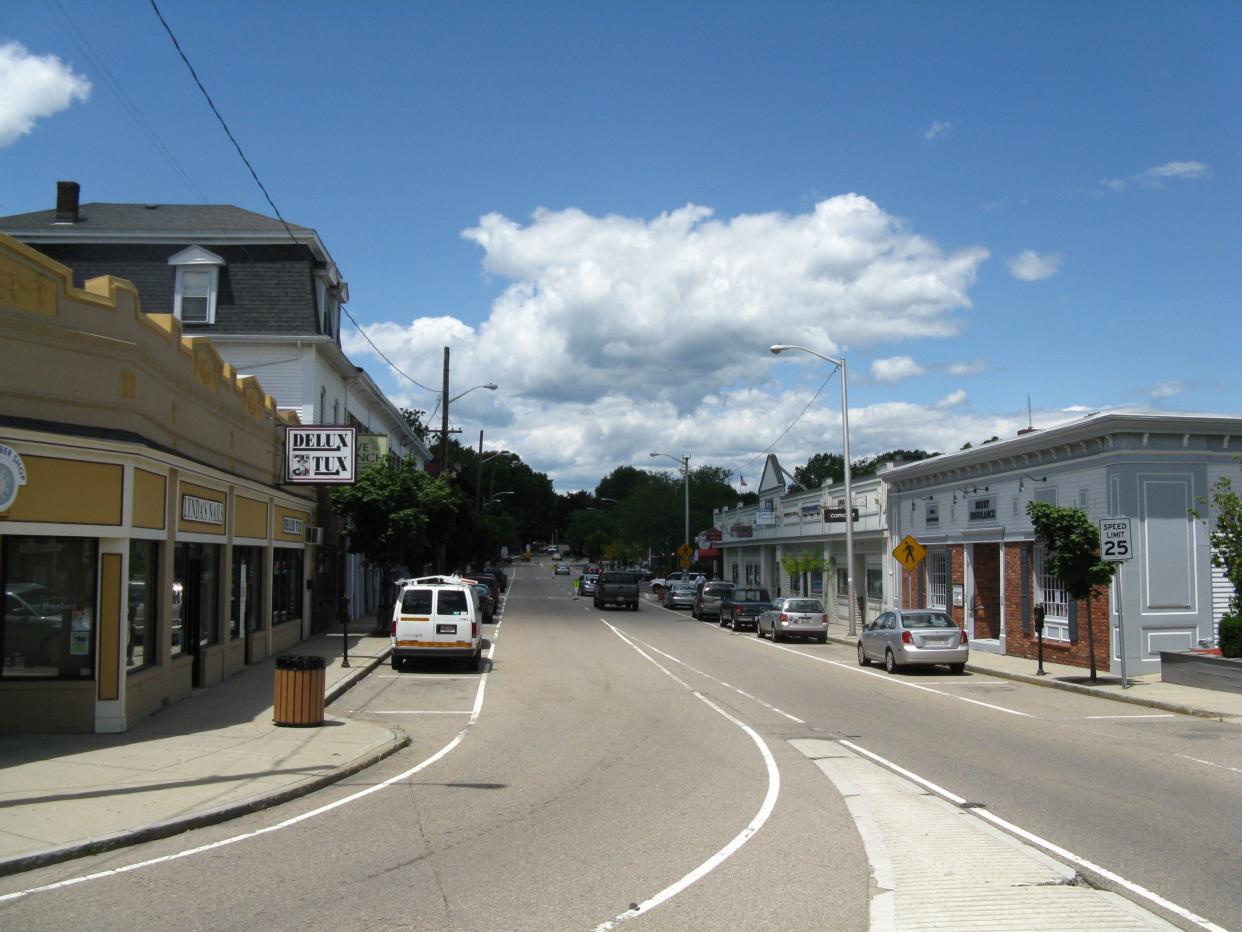
Franklin is the safest city in America, so it seems. It’s conveniently located between Boston and Providence, Rhode Island. About 80% of residents own their own homes, and the median household income is more than $122,000. The town is named in honor of Benjamin Franklin, whose donated books formed the first public library in the country.
- Population: 34,087
- Total Crime Rate (per 1,000 residents): 1.9
- Chance of Being a Victim: 1 in 524
- Major City Nearby: Boston
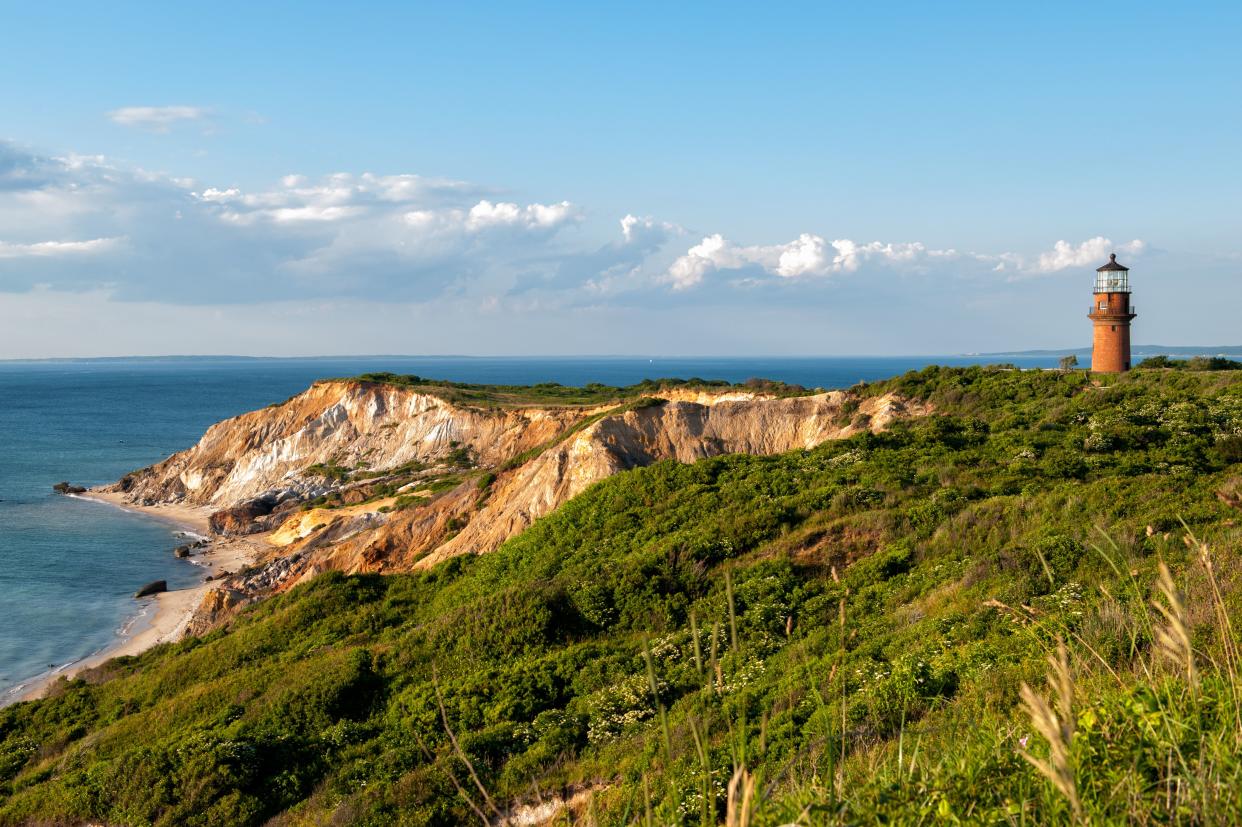
It’s a safe bet that house hunters will find many of these 50 safest cities in the U.S. appealing. If you’re looking for a comfortable landing spot and a home, it’s time to secure a mortgage.
This article originally appeared on SoFi.comand was syndicated by MediaFeed.org.
SoFi Home Loans
Terms, conditions, and state restrictions apply. SoFi Home Loans are not available in all states. See SoFi.com/eligibility for more information.
SoFi Loan Products
SoFi loans are originated by SoFi Lending Corp. or an affiliate (dba SoFi), a lender licensed by the Department of Financial Protection and Innovation under the California Financing Law, license # 6054612; NMLS # 1121636. For additional product-specific legal and licensing information, see SoFi.com/legal.
External Websites: The information and analysis provided through hyperlinks to third party websites, while believed to be accurate, cannot be guaranteed by SoFi. Links are provided for informational purposes and should not be viewed as an endorsement.

